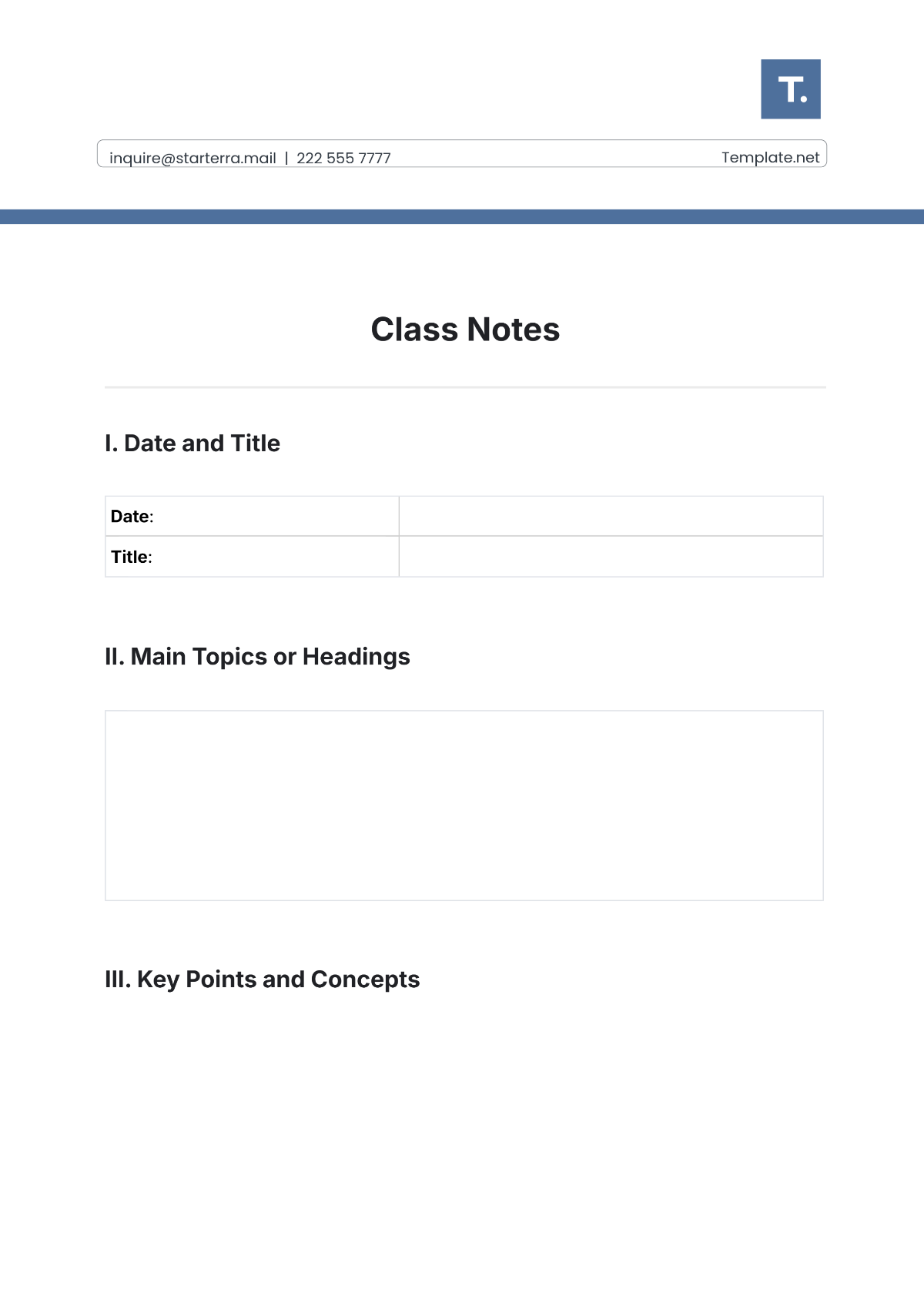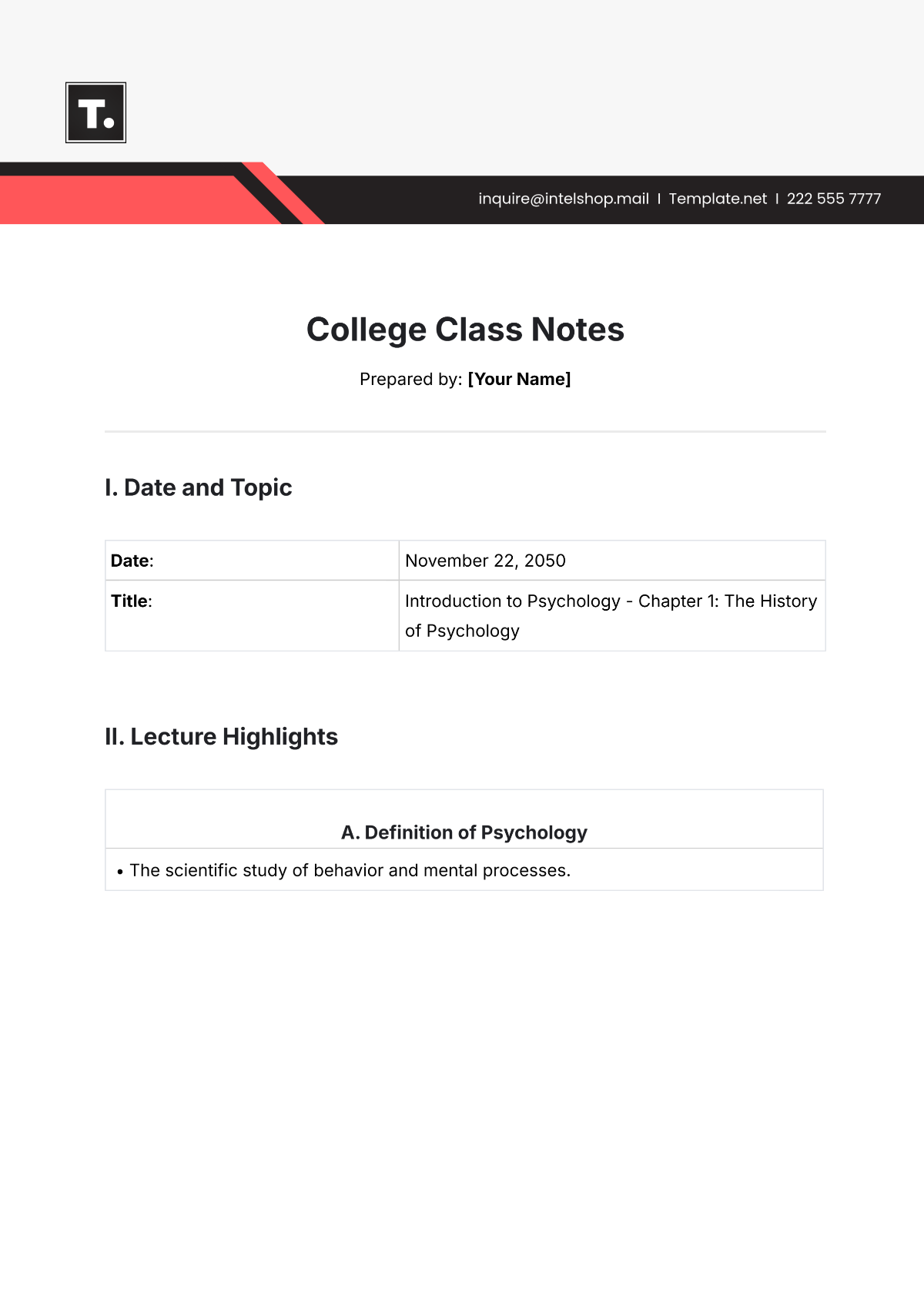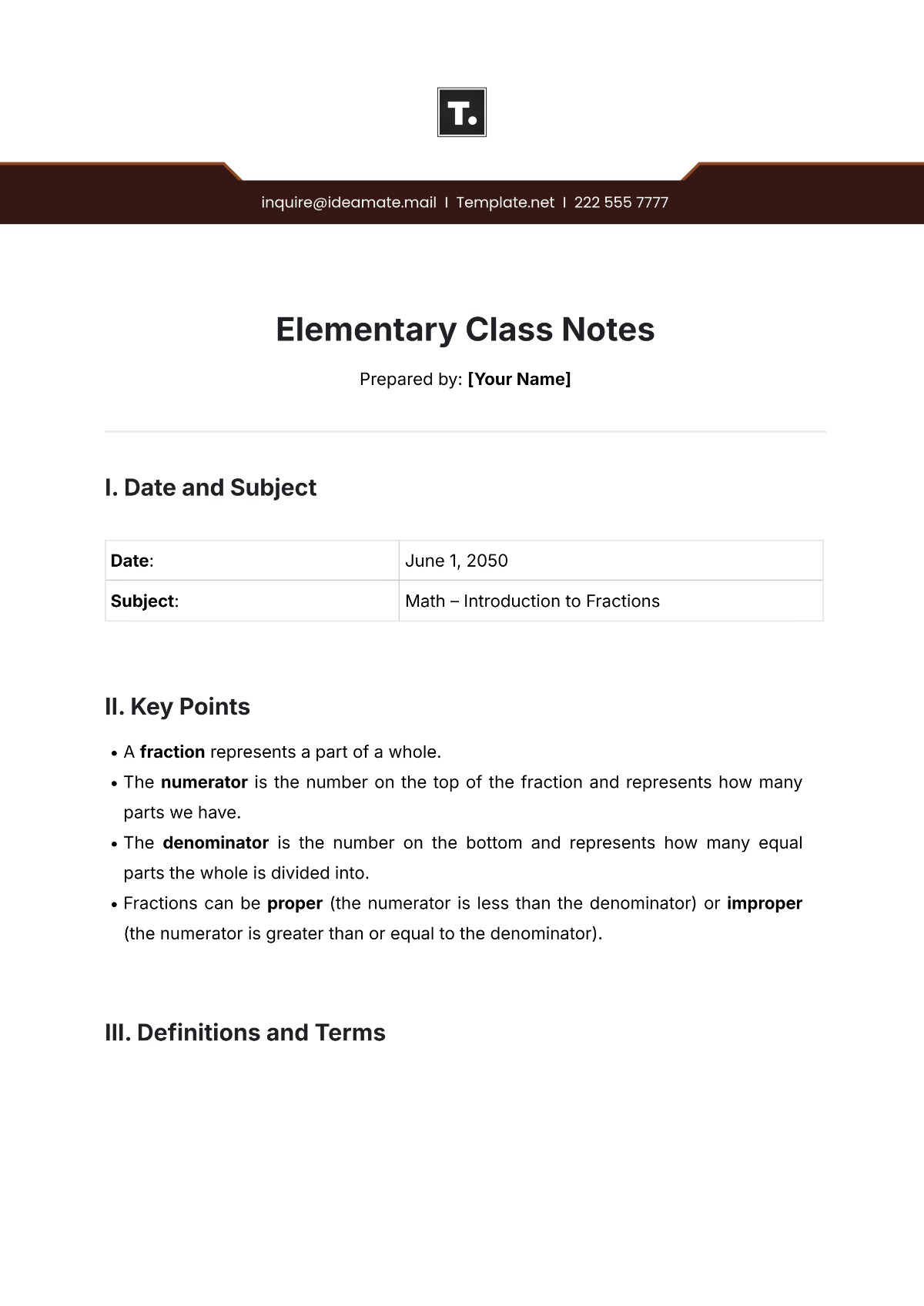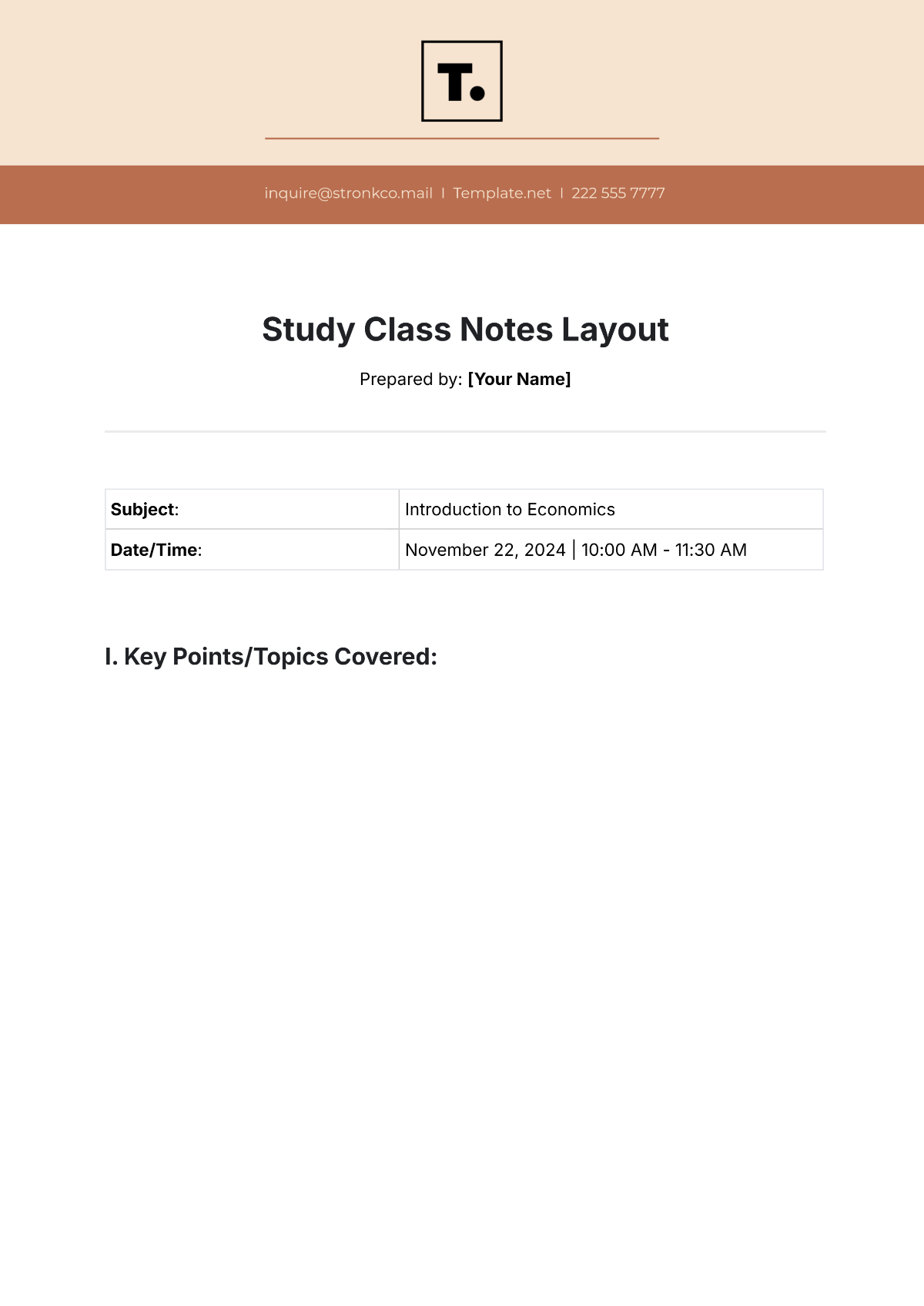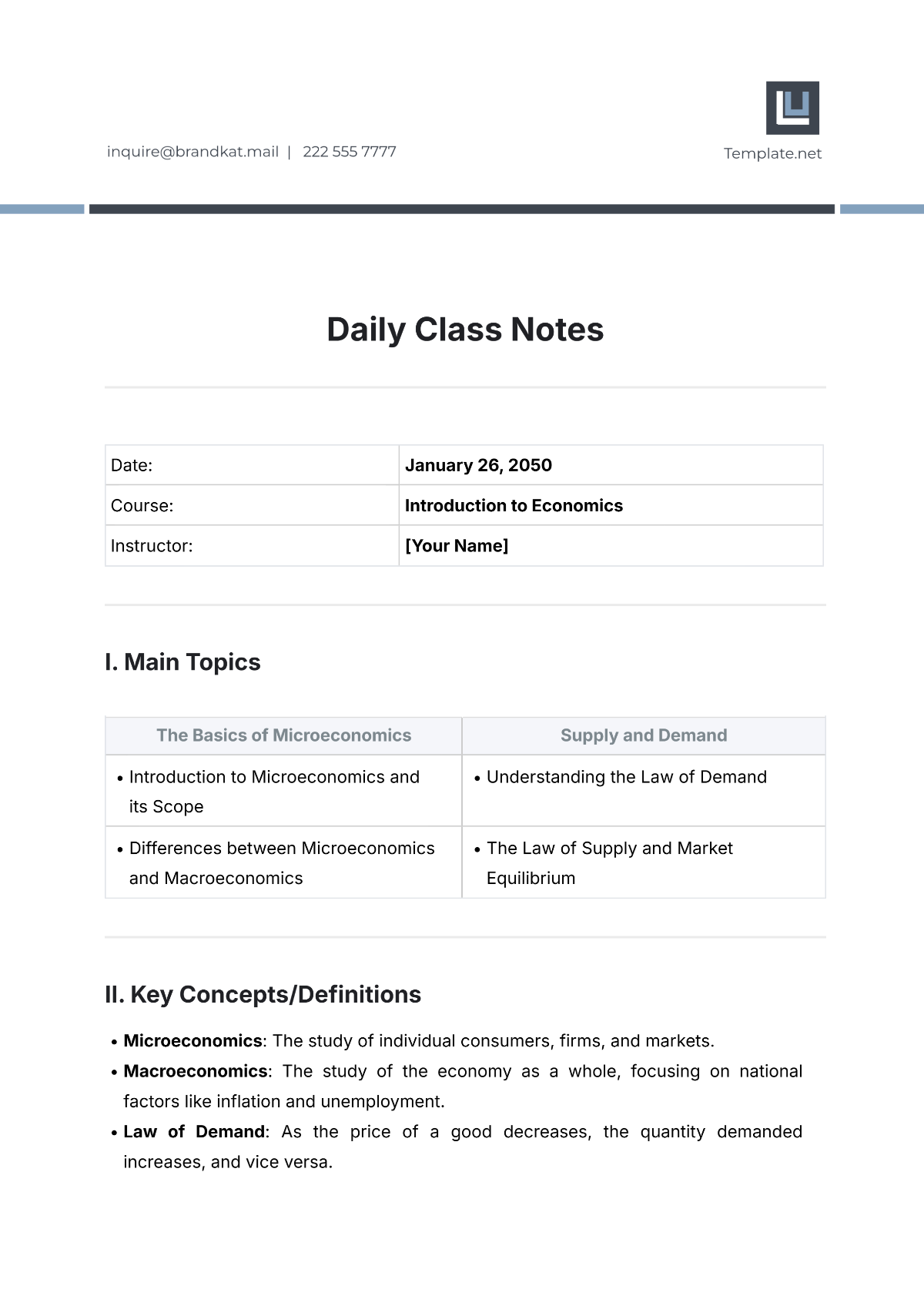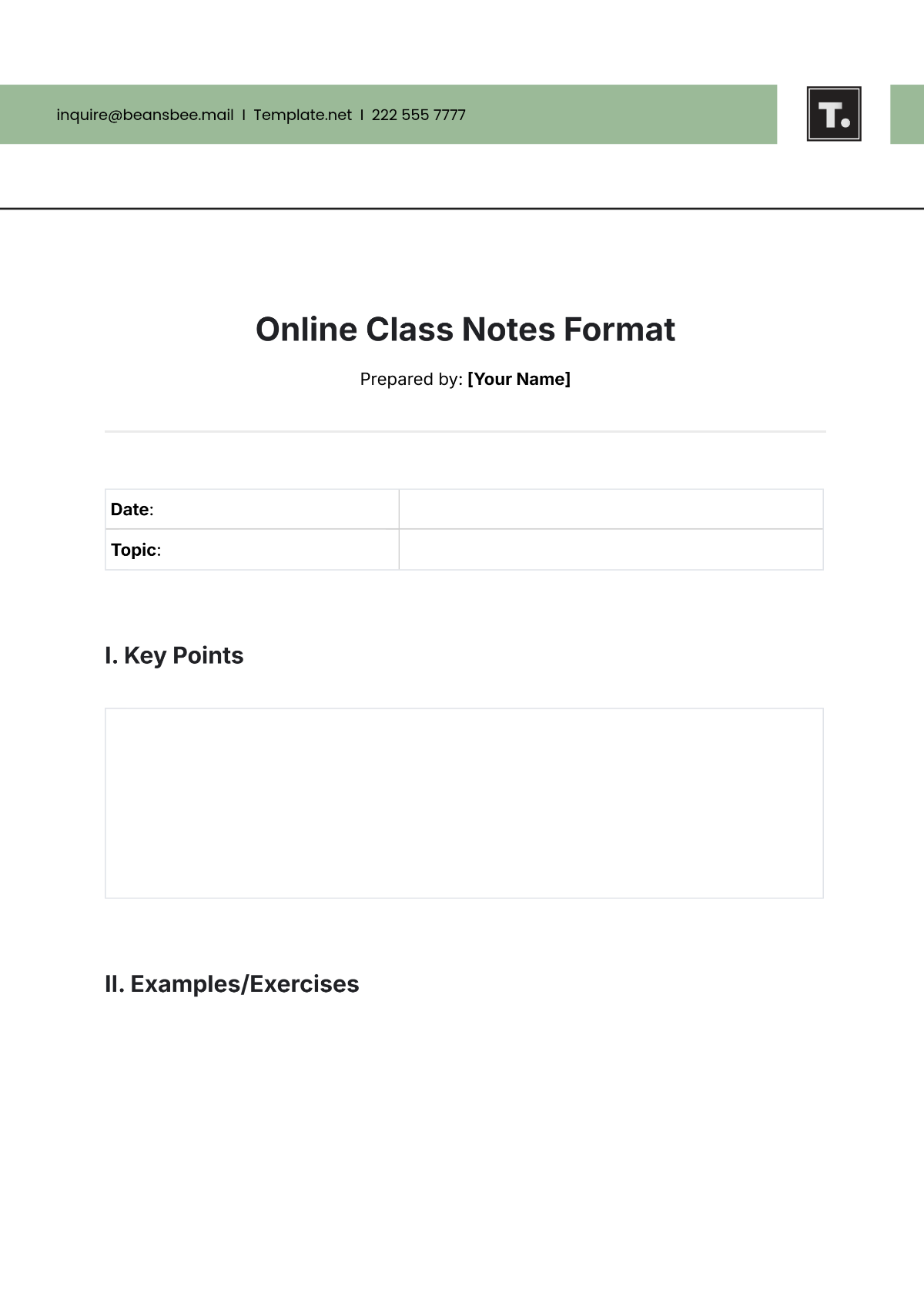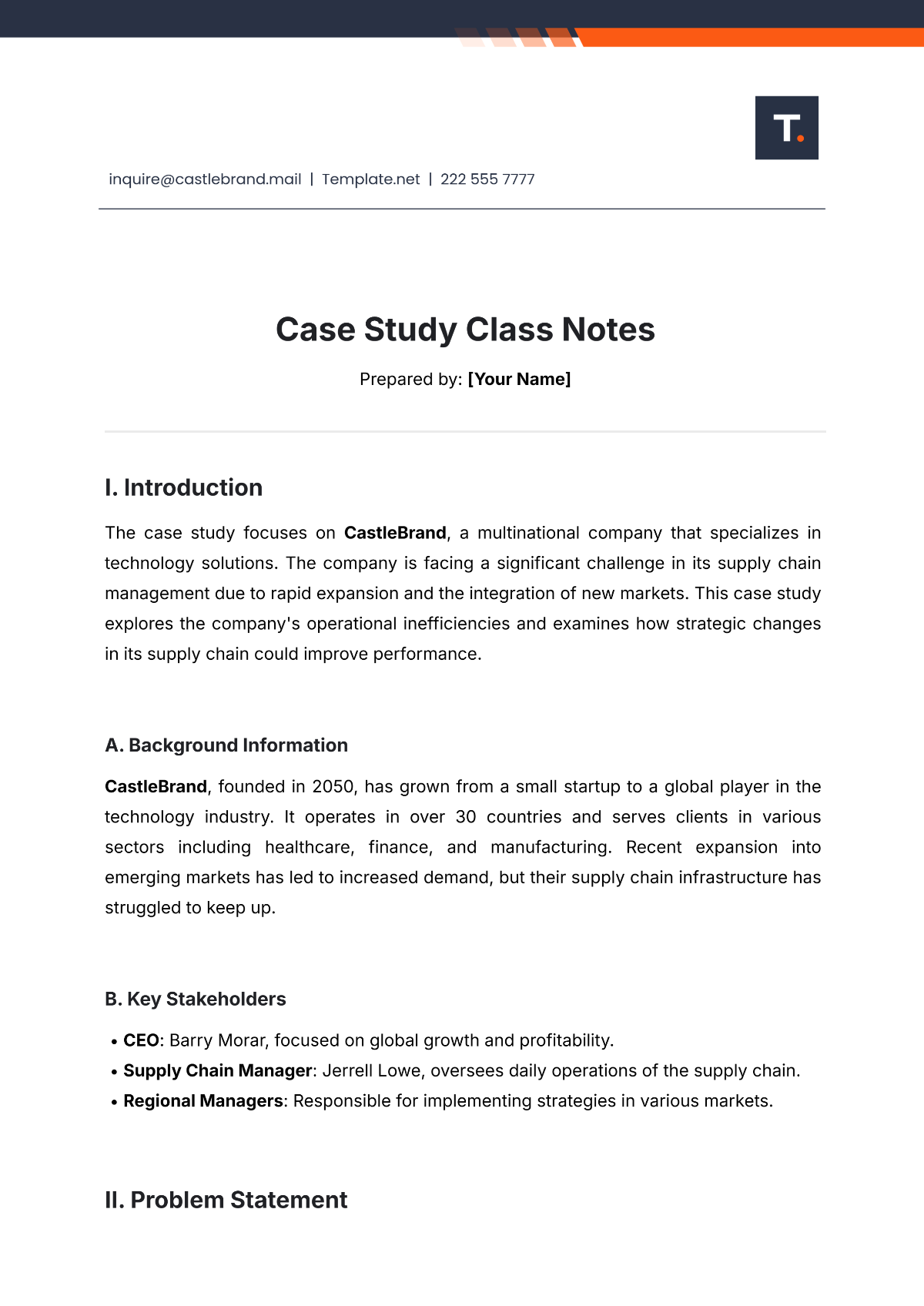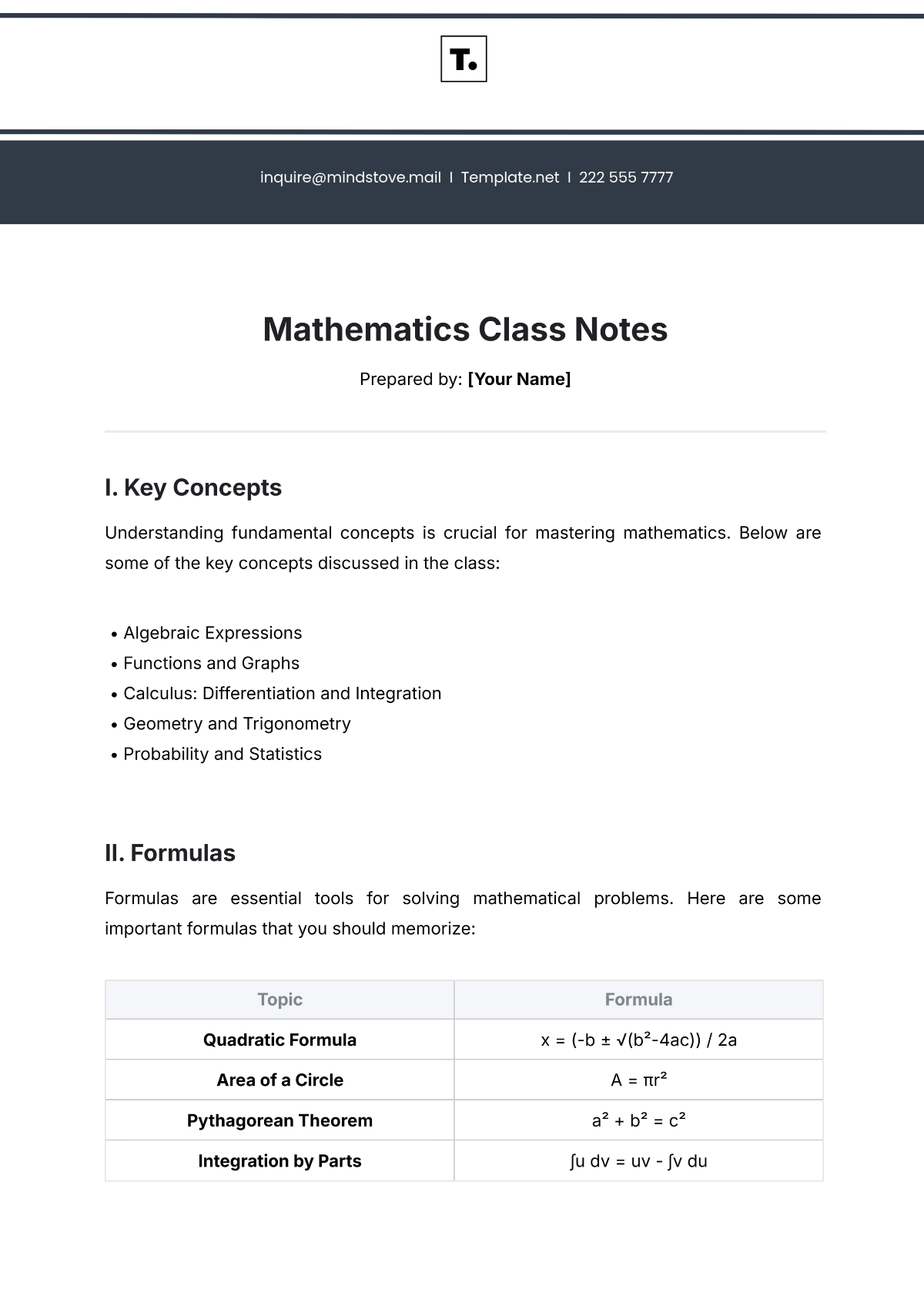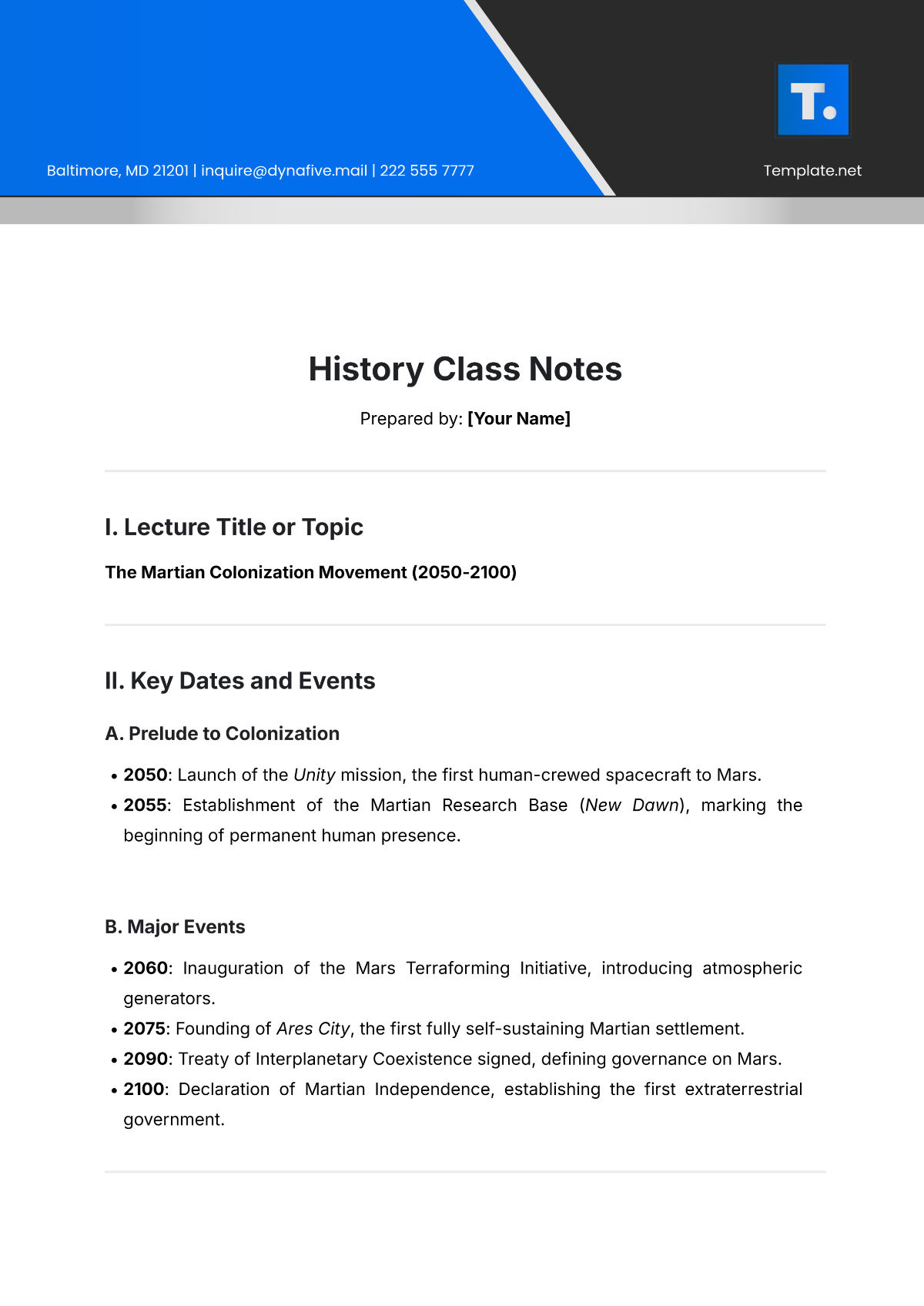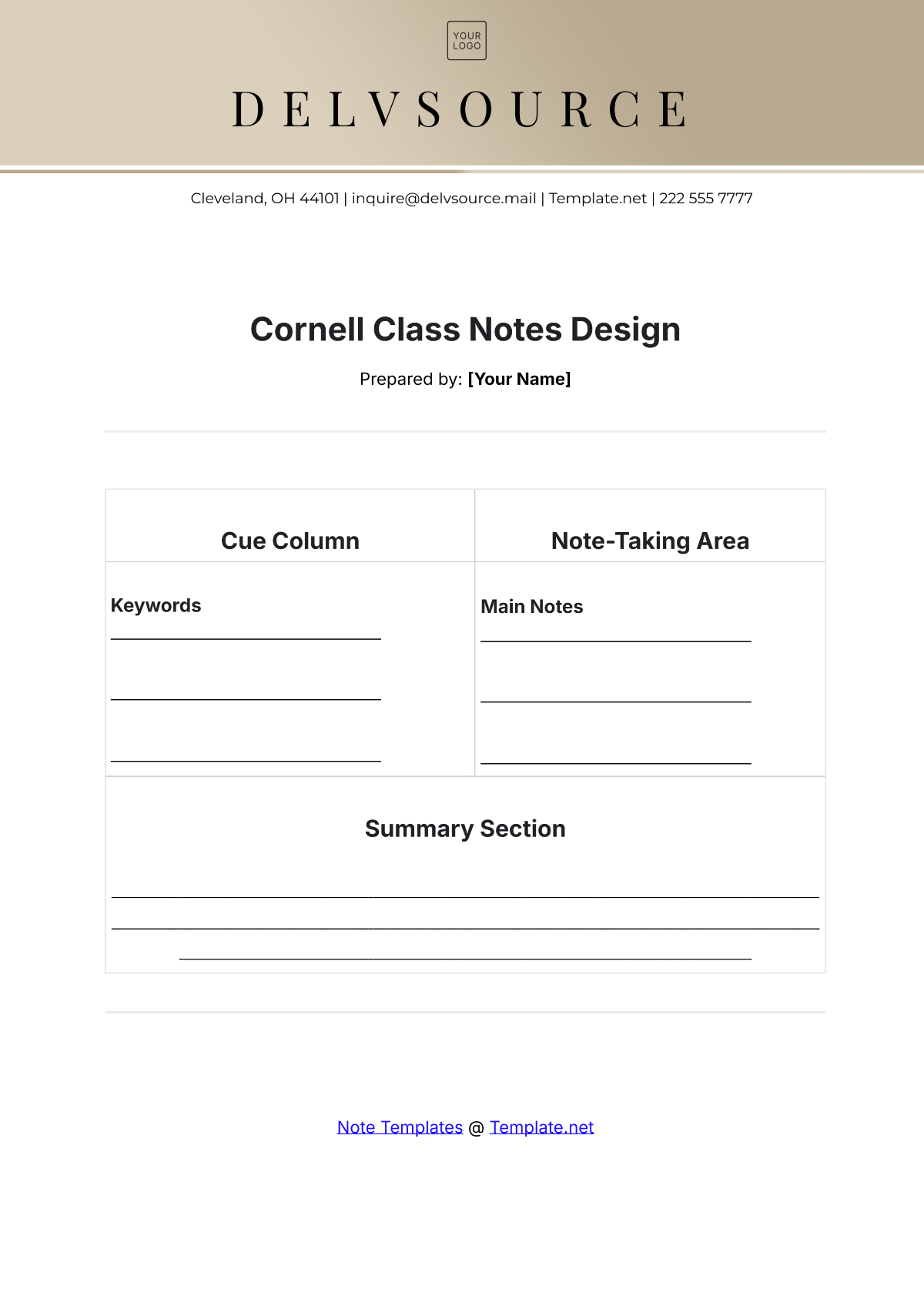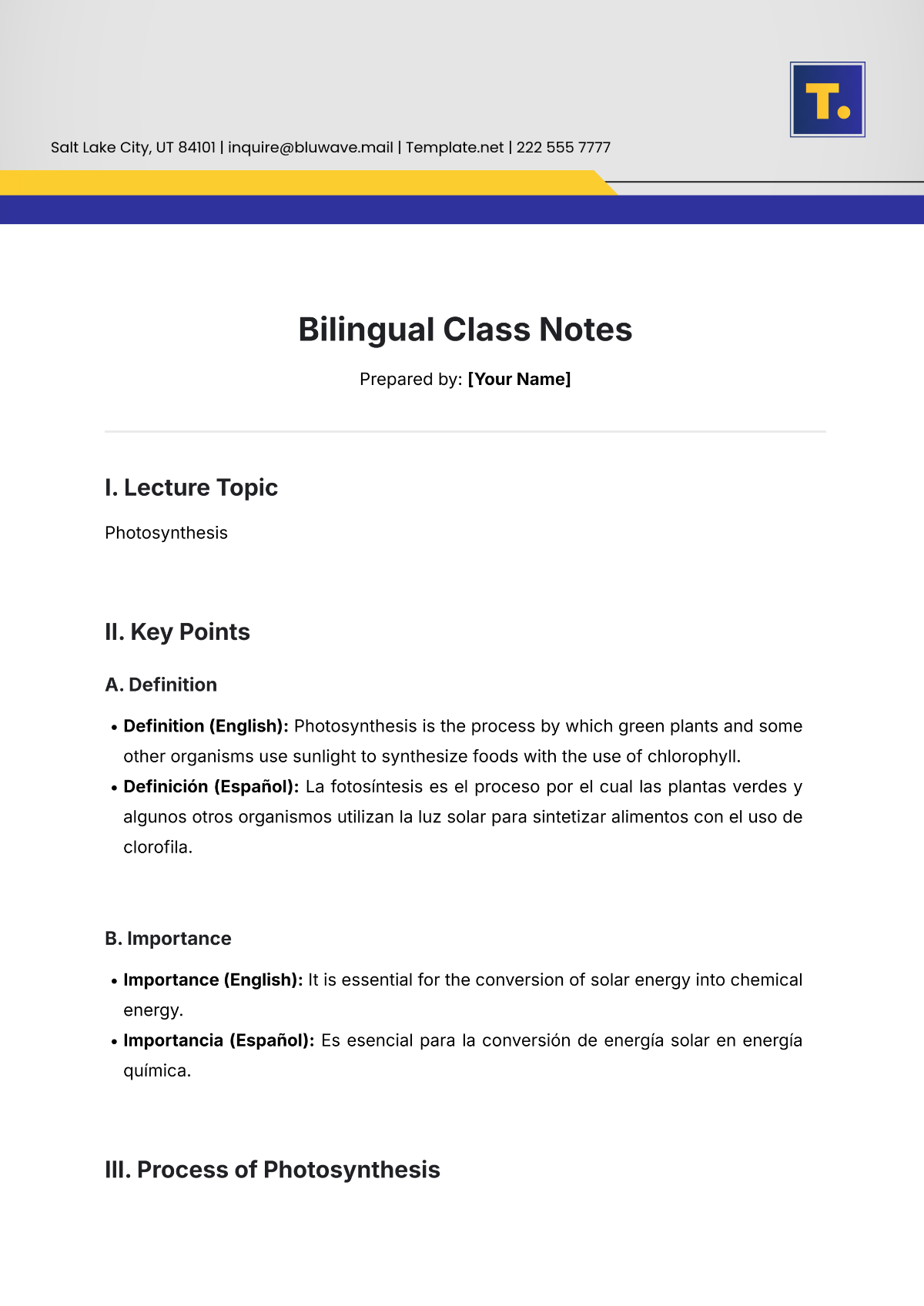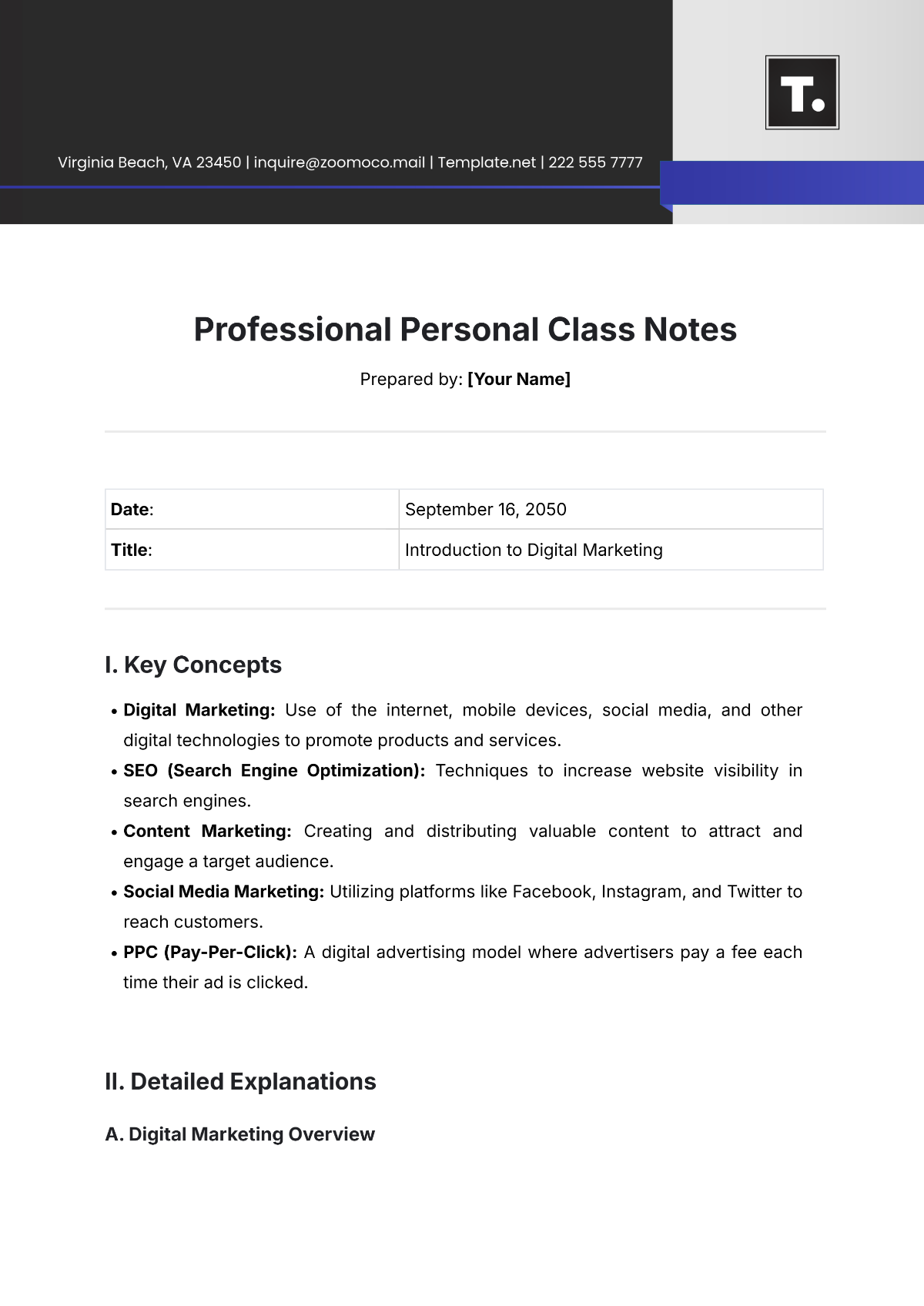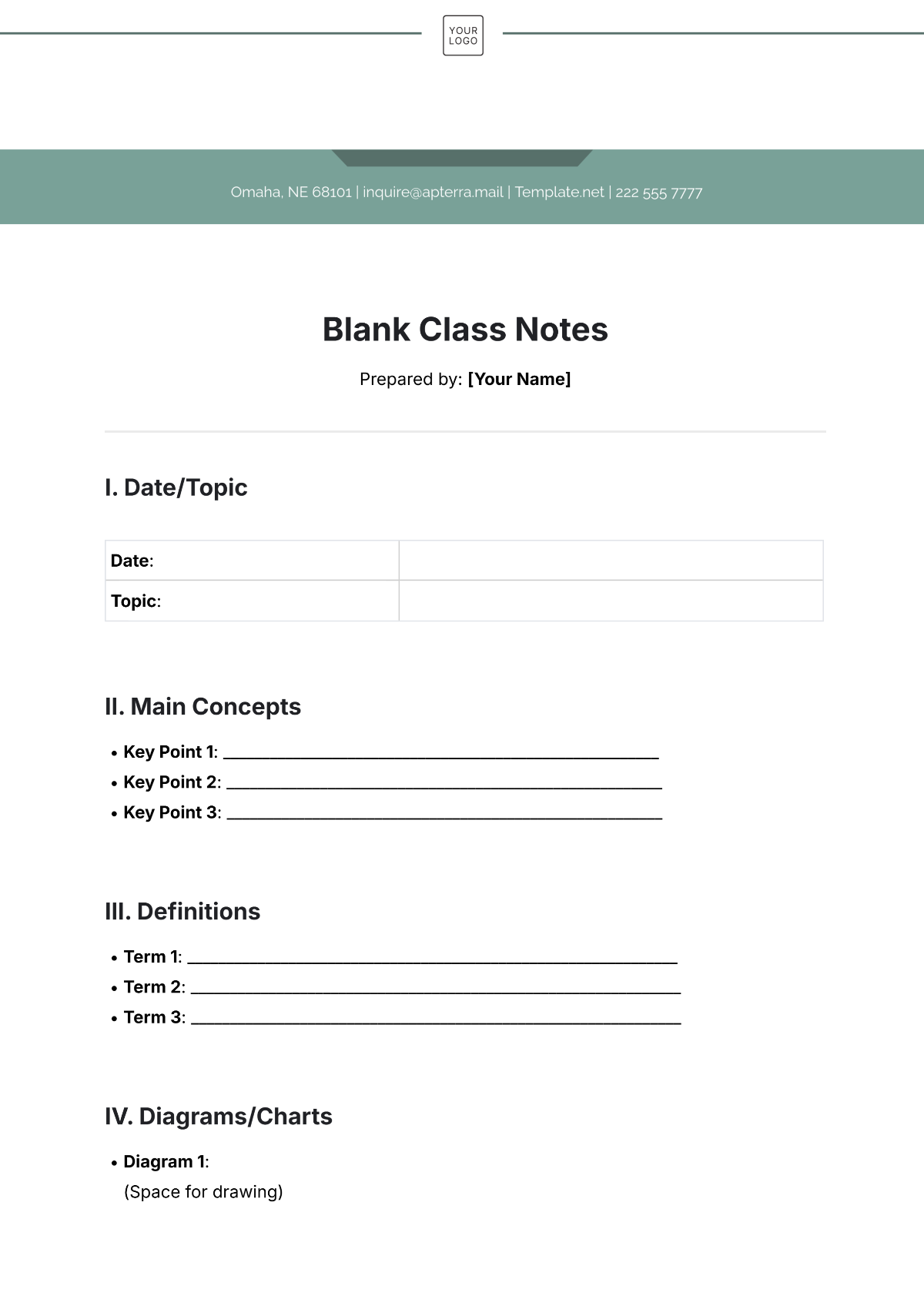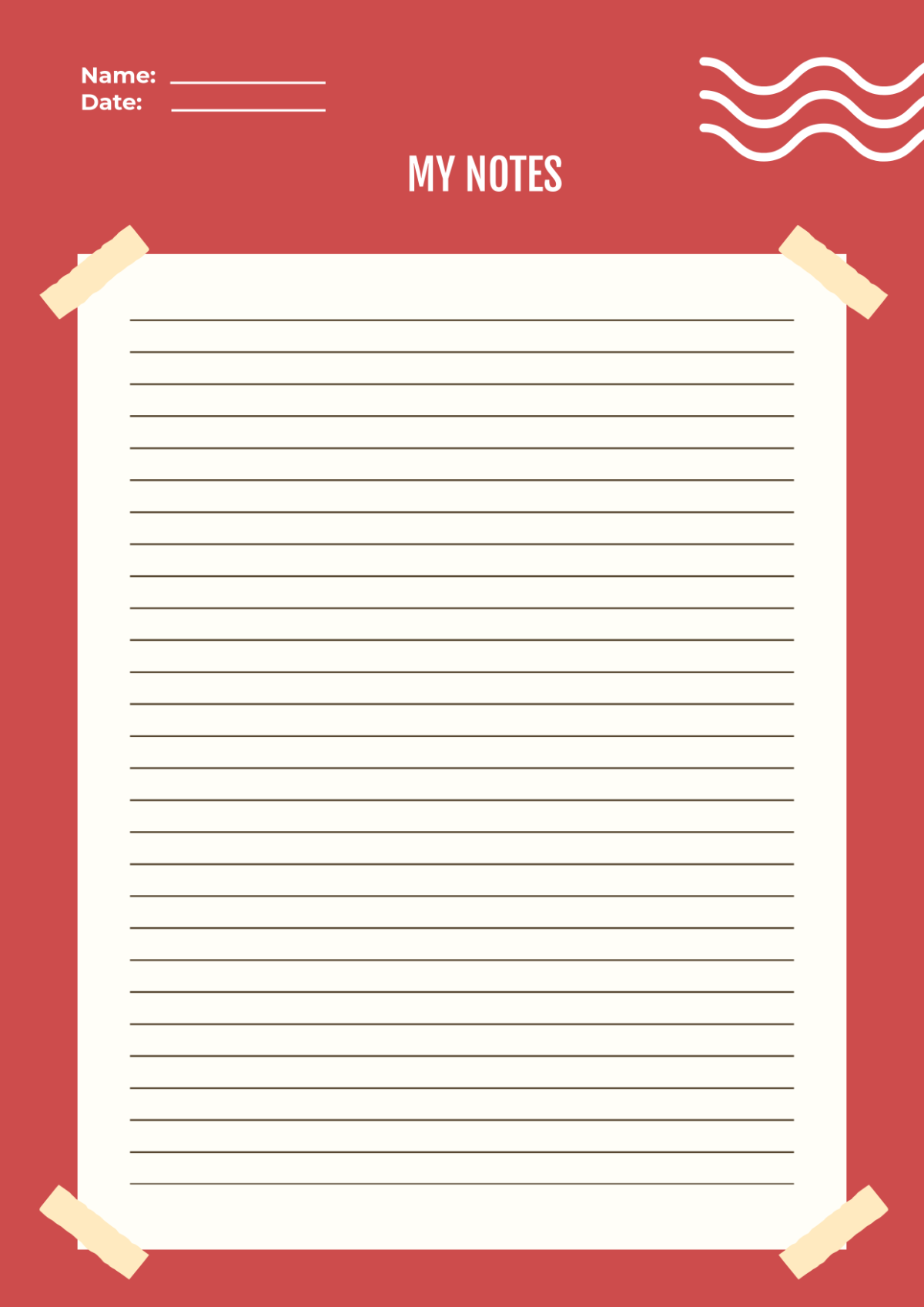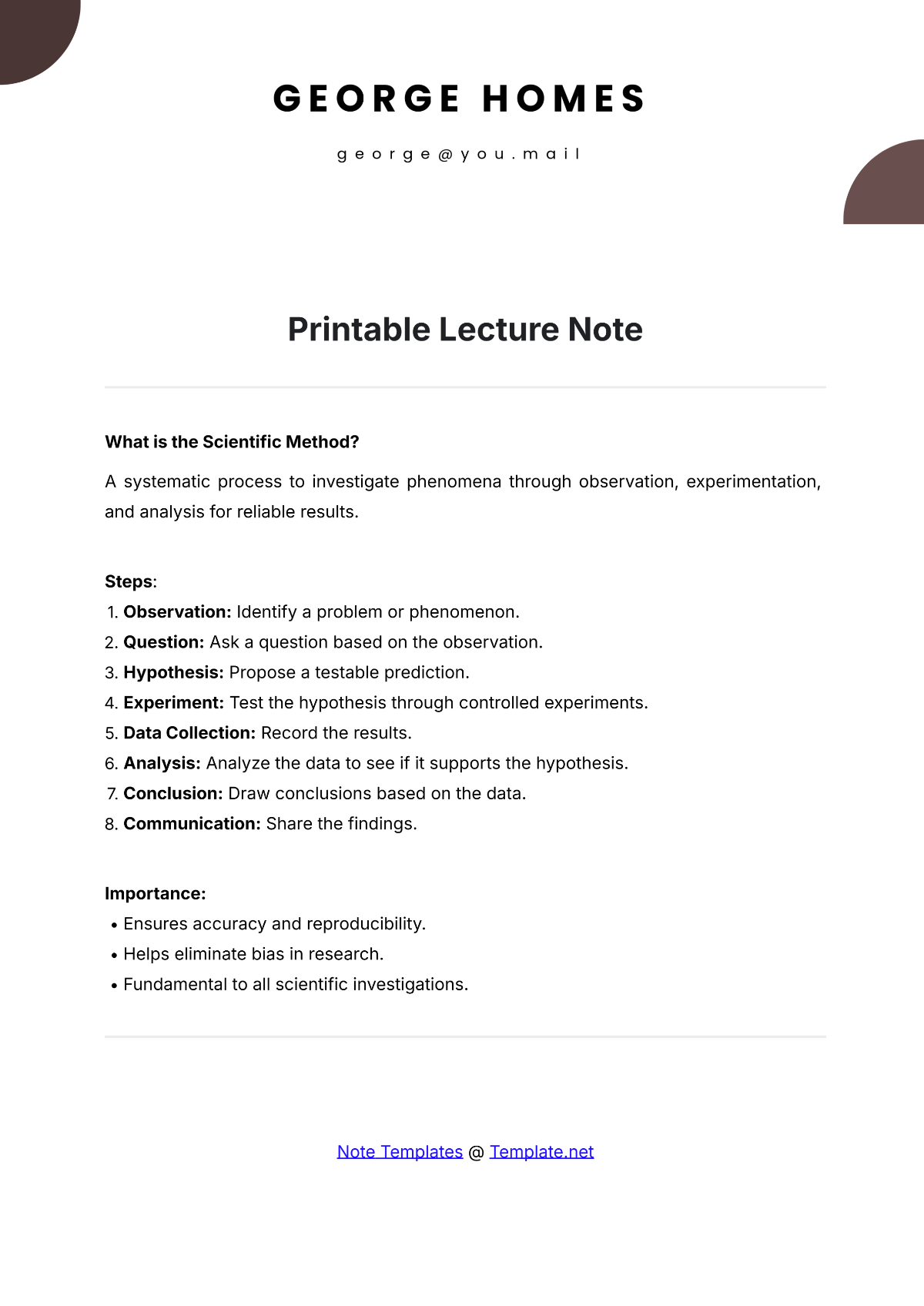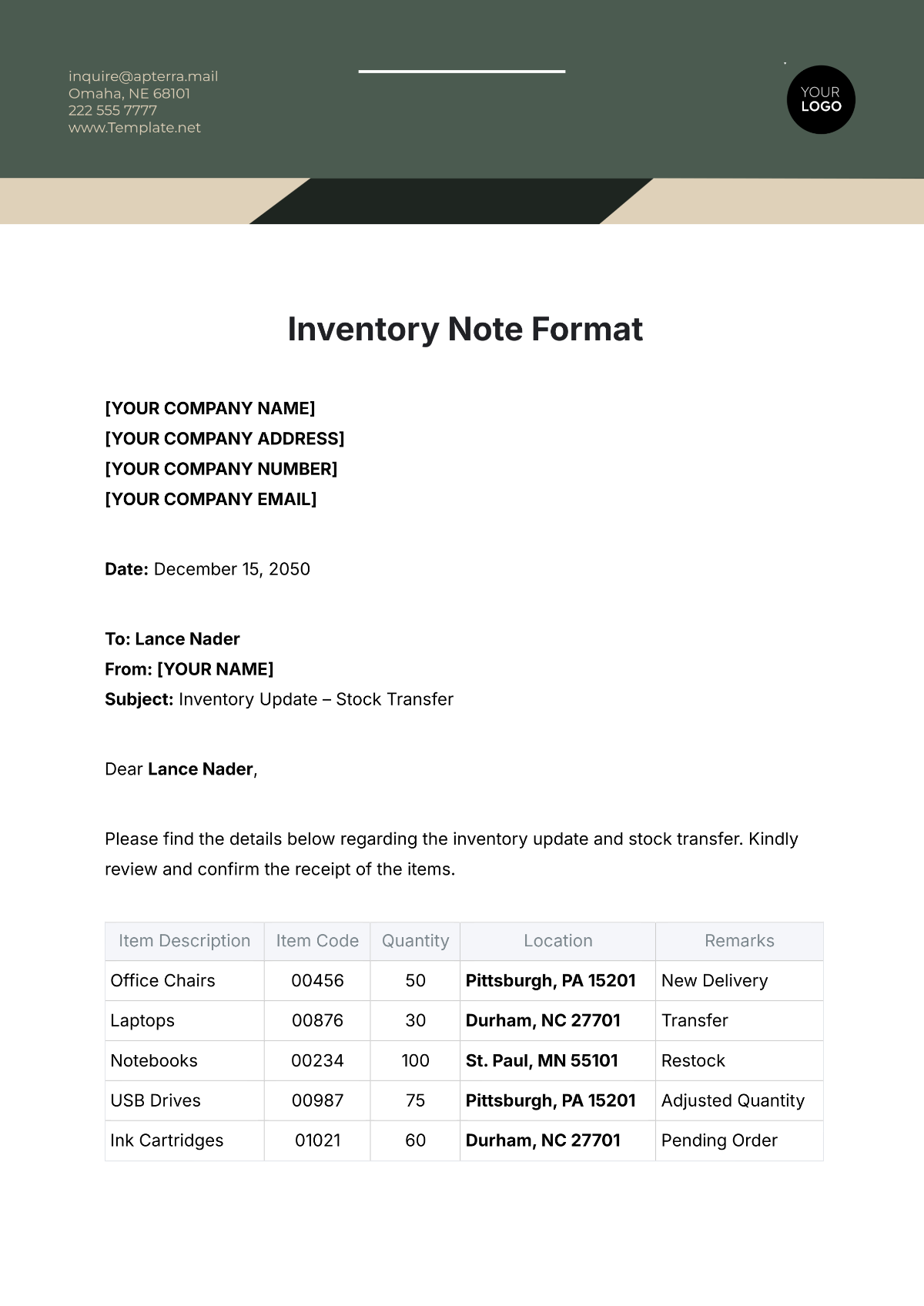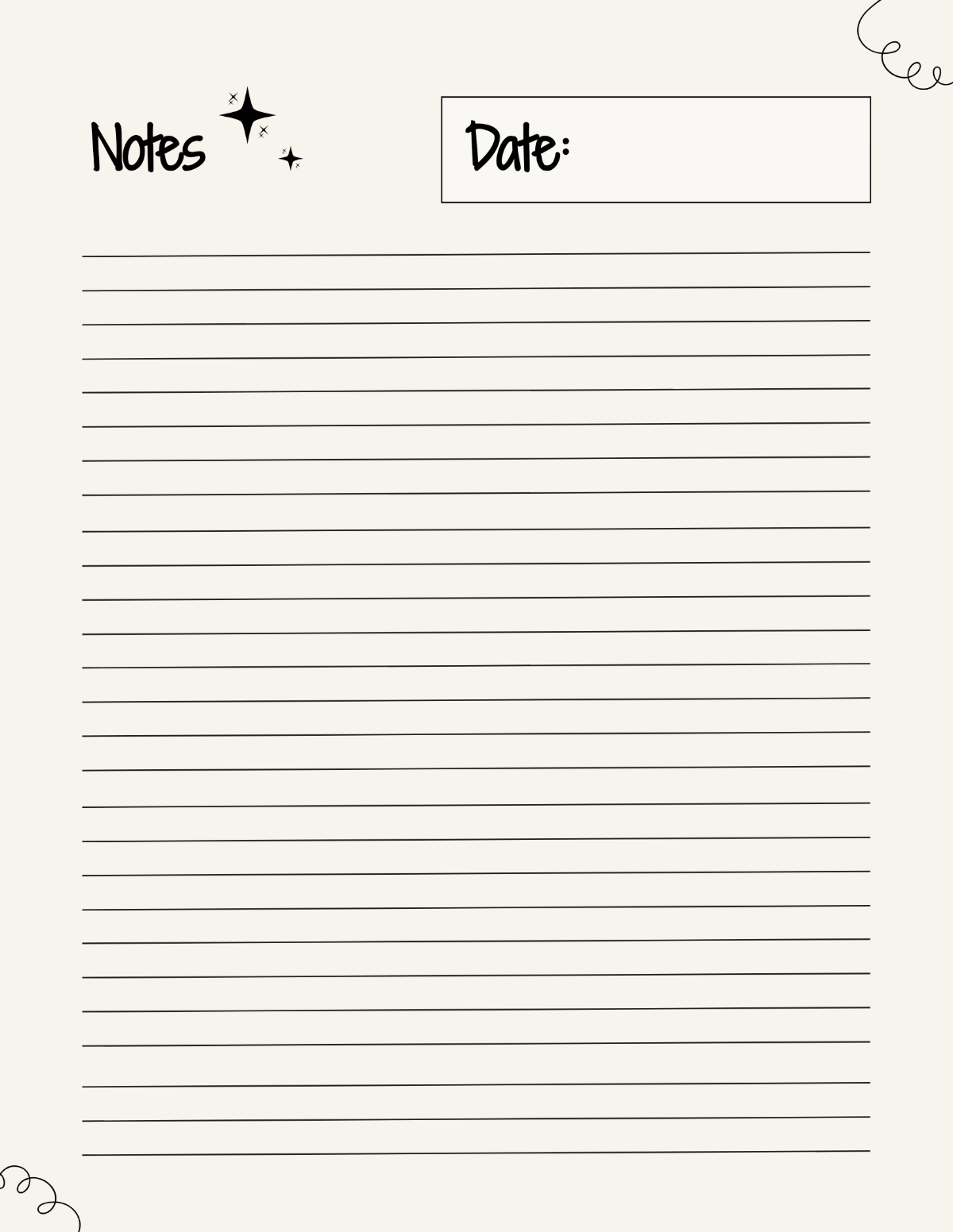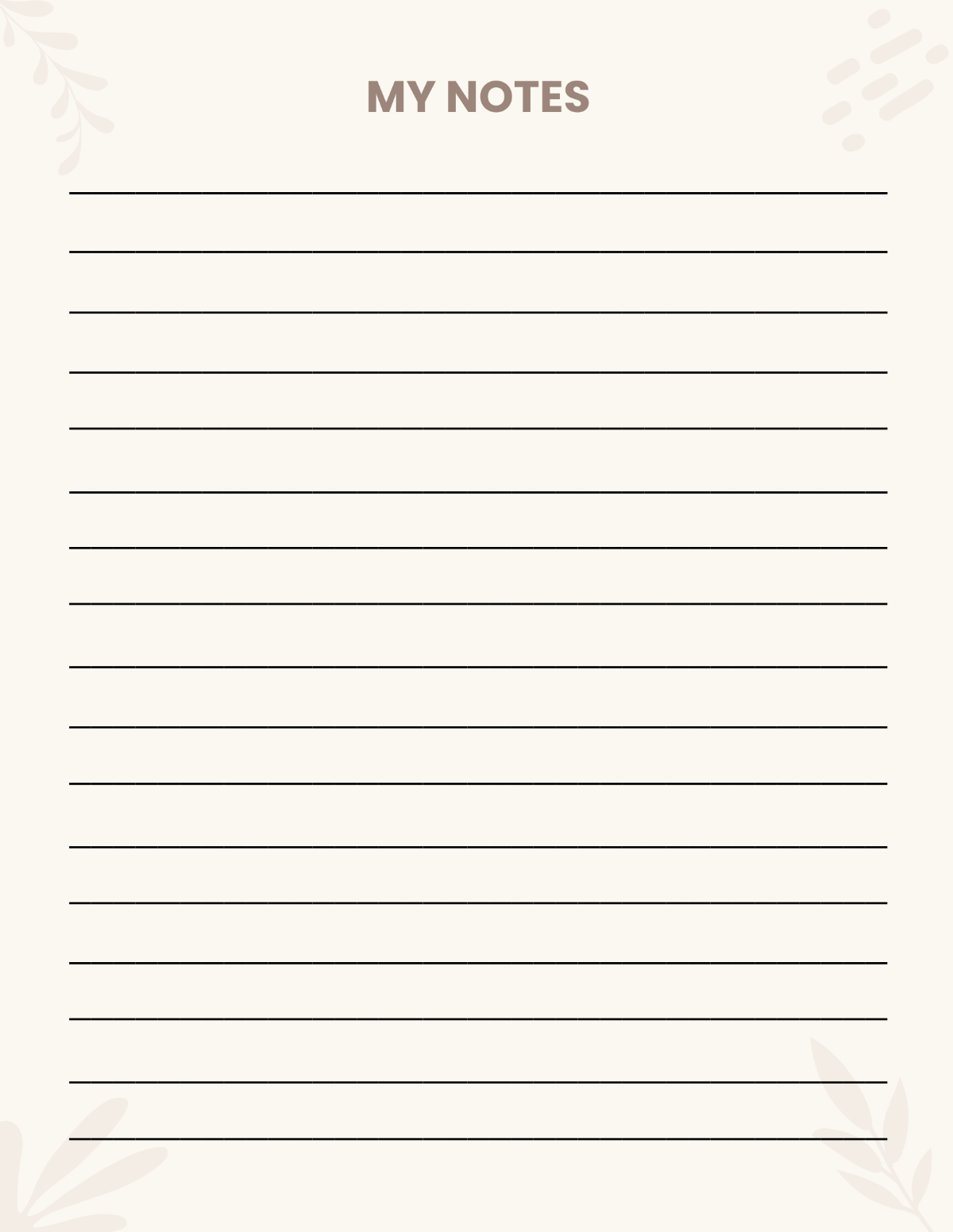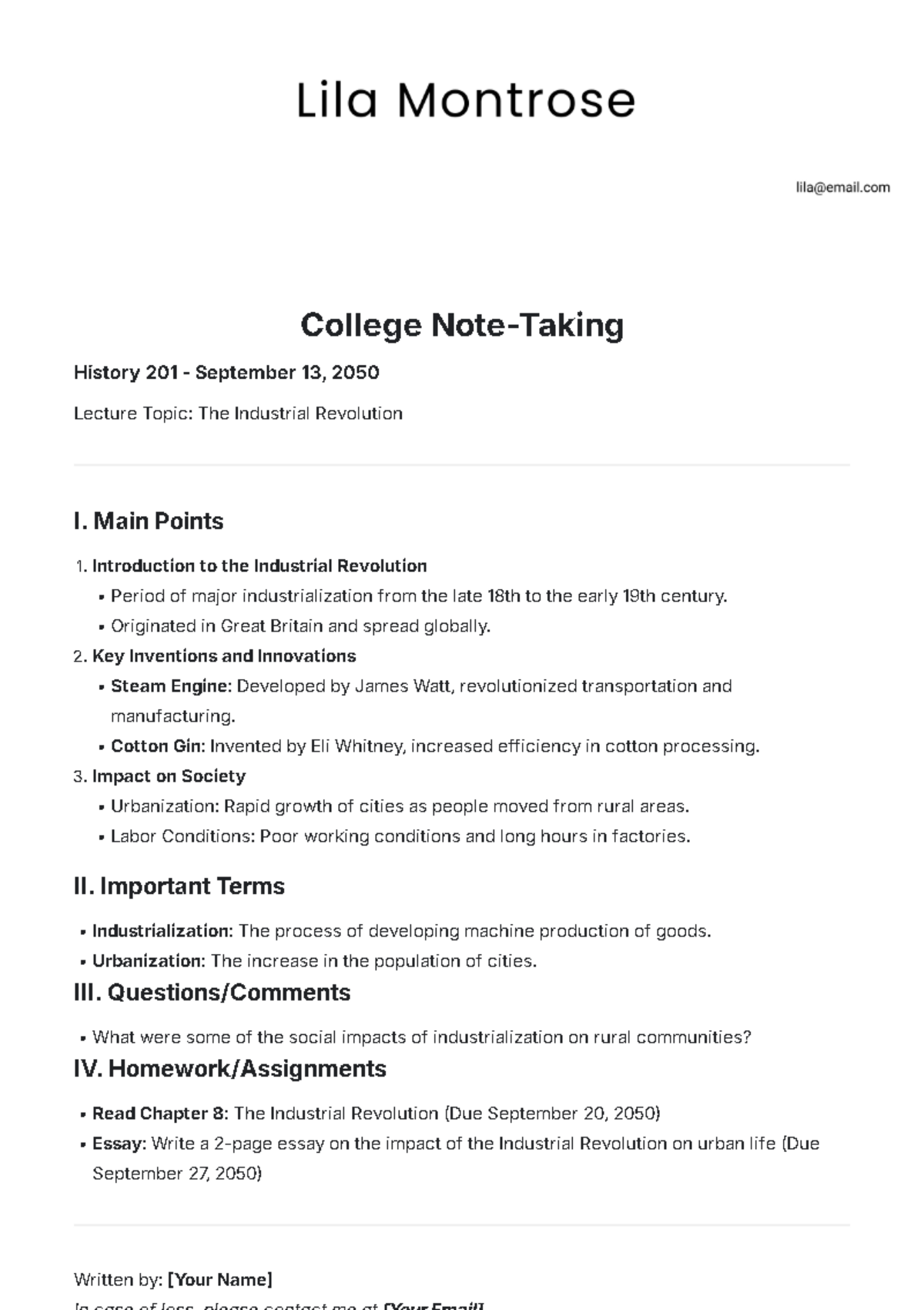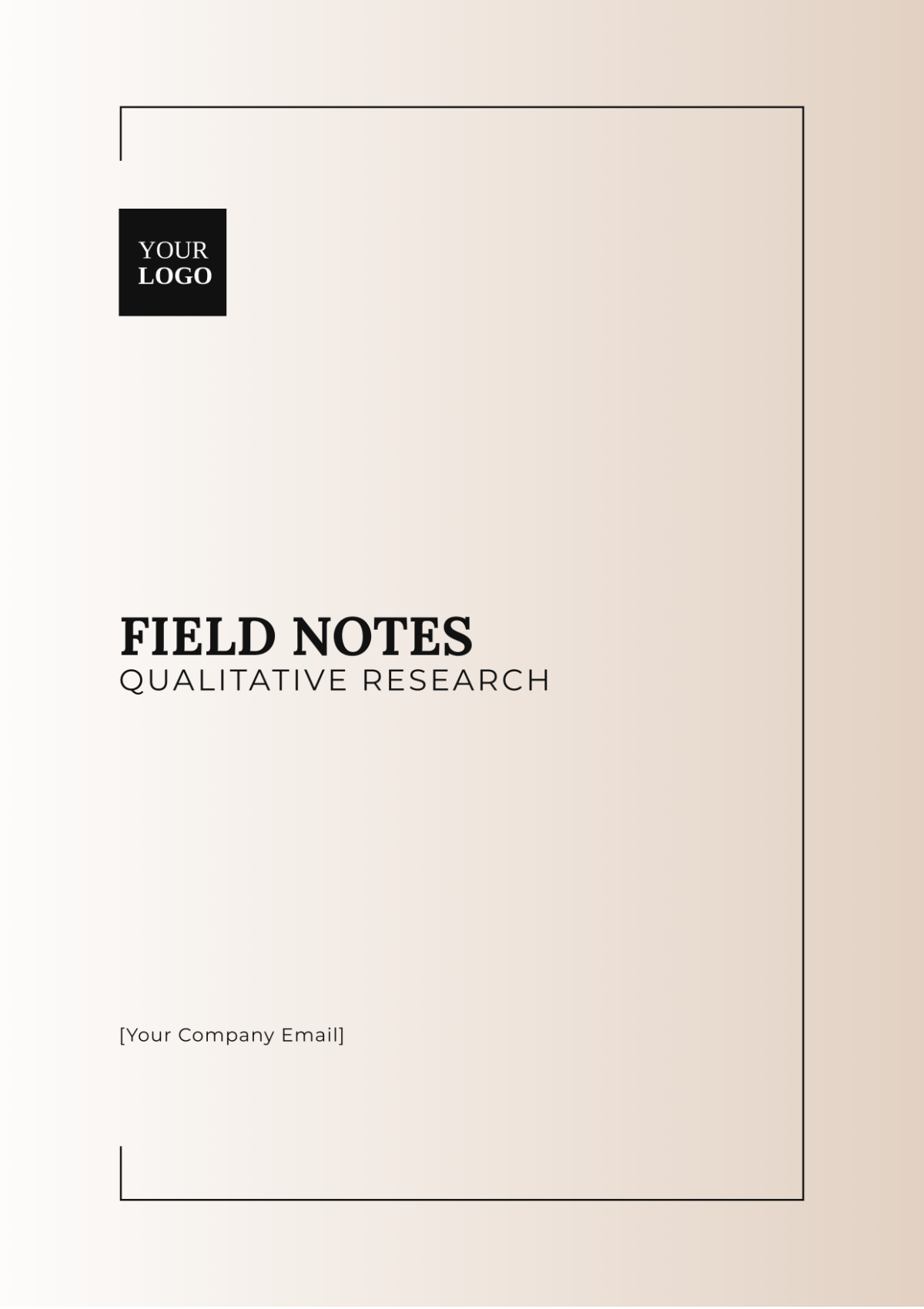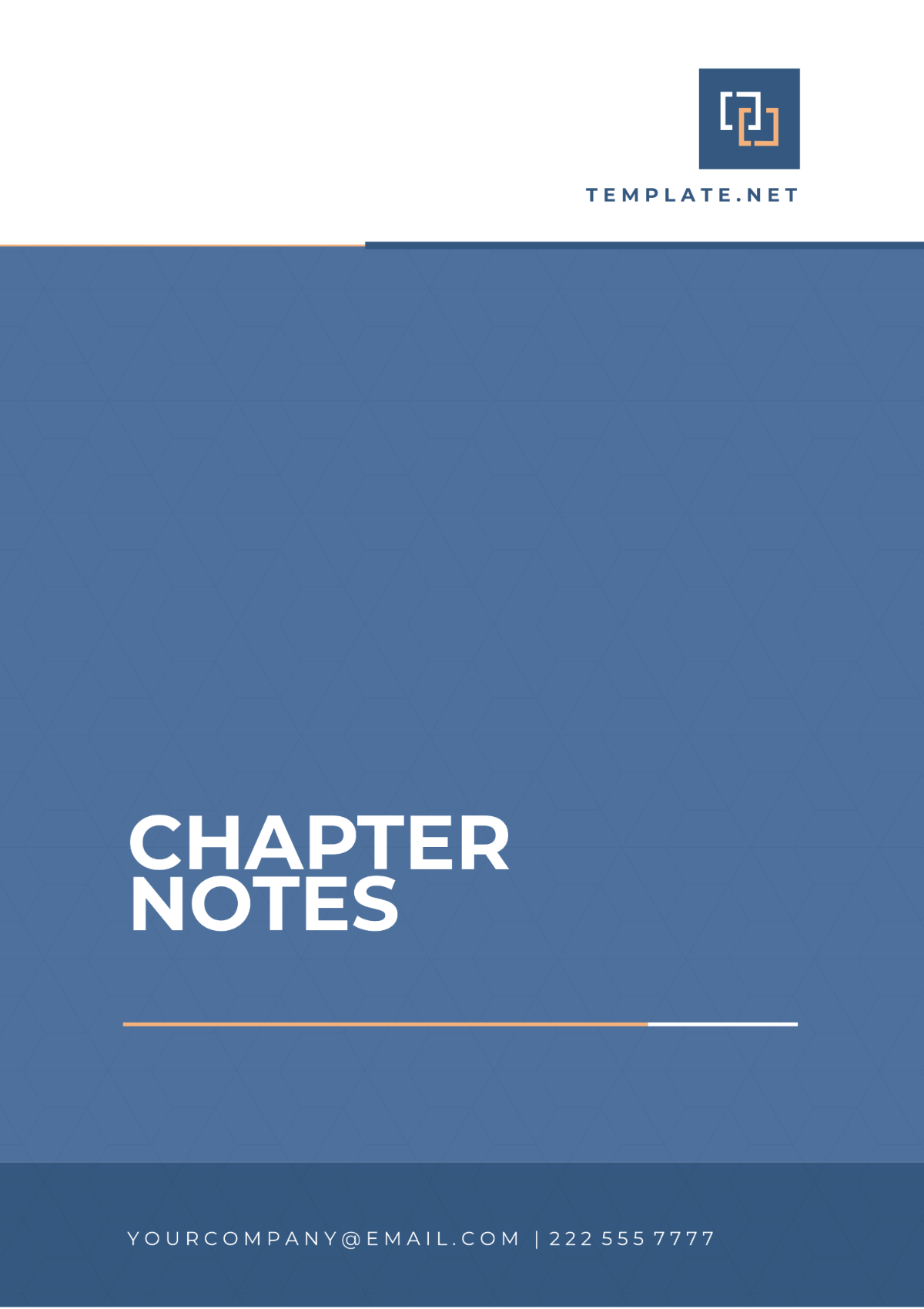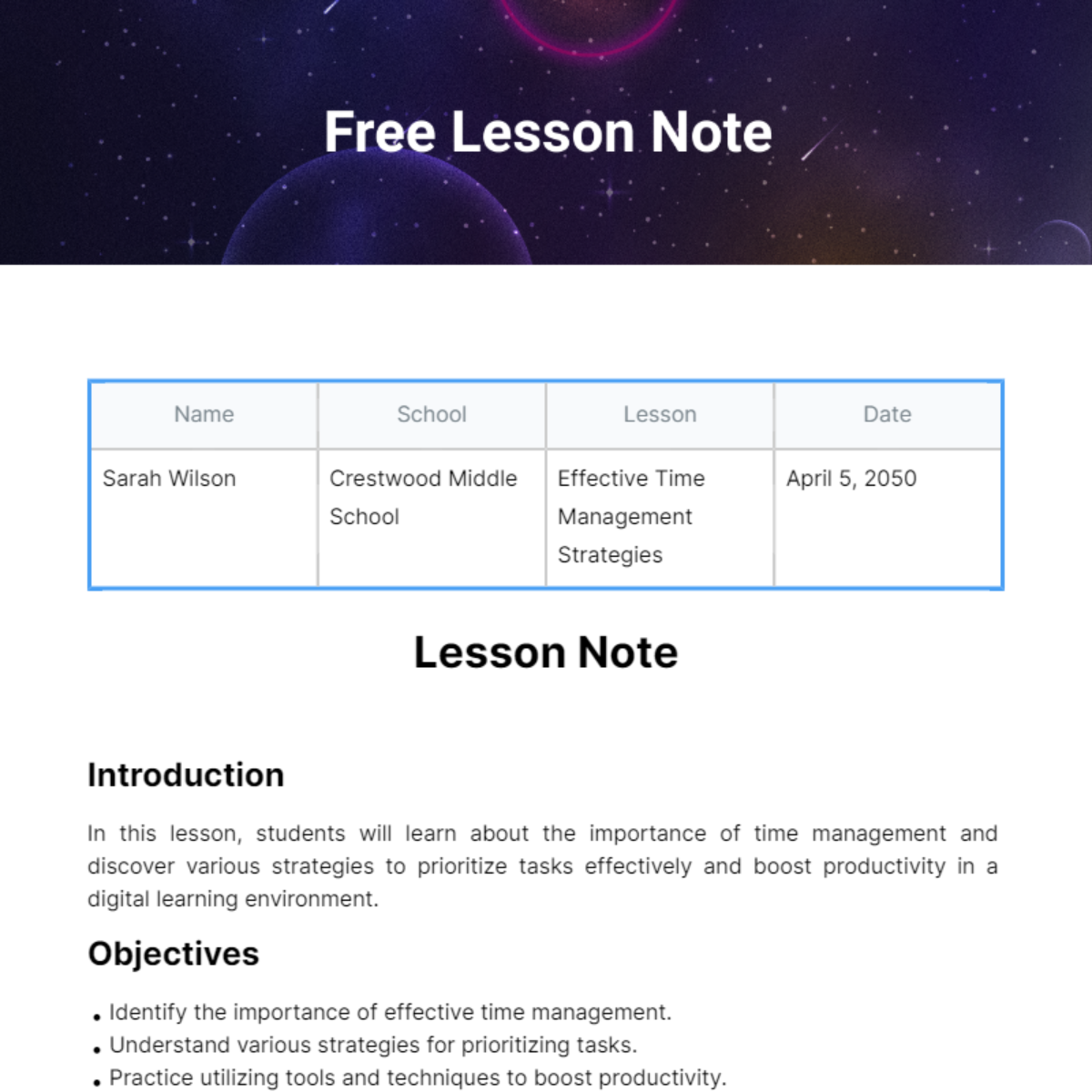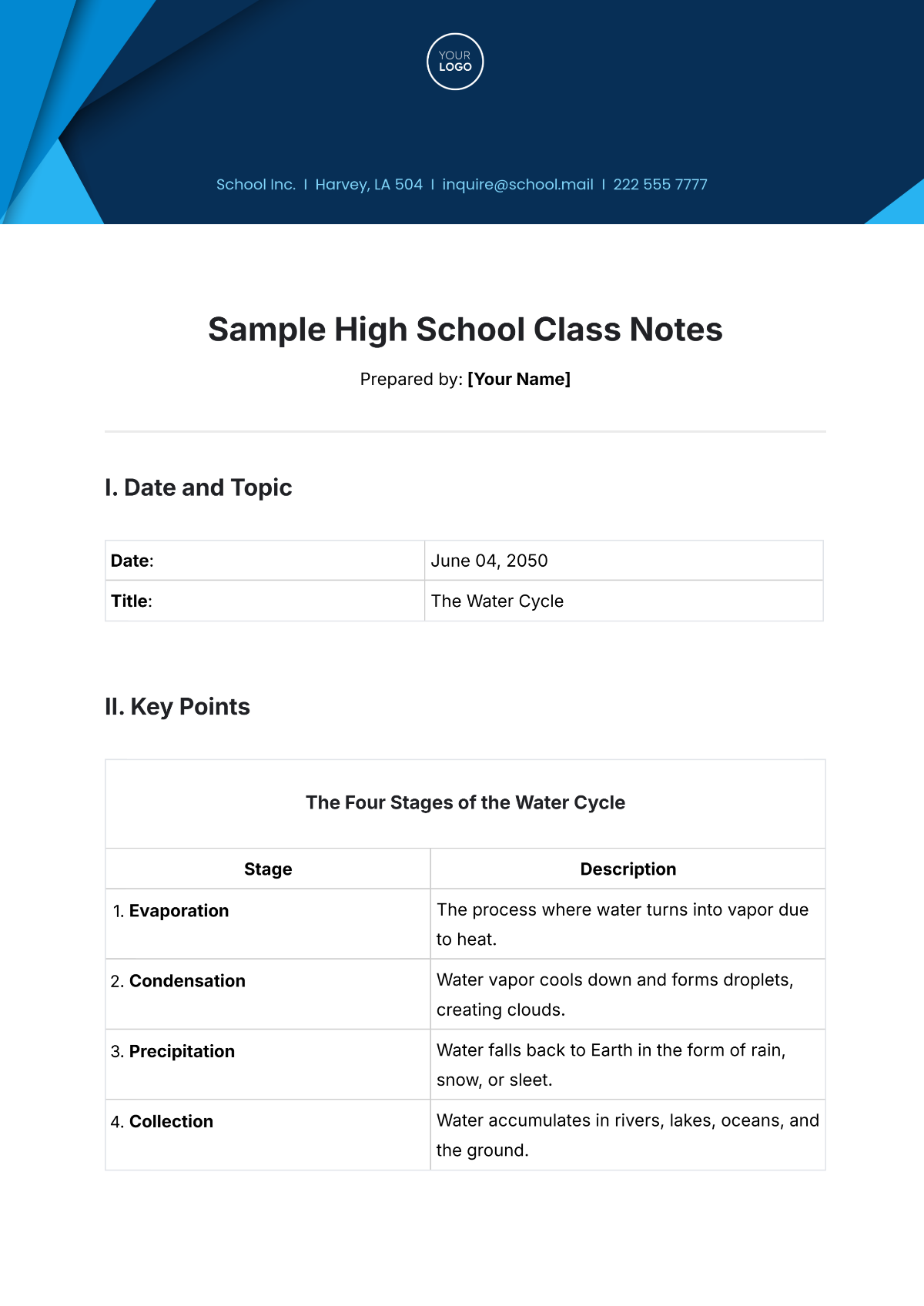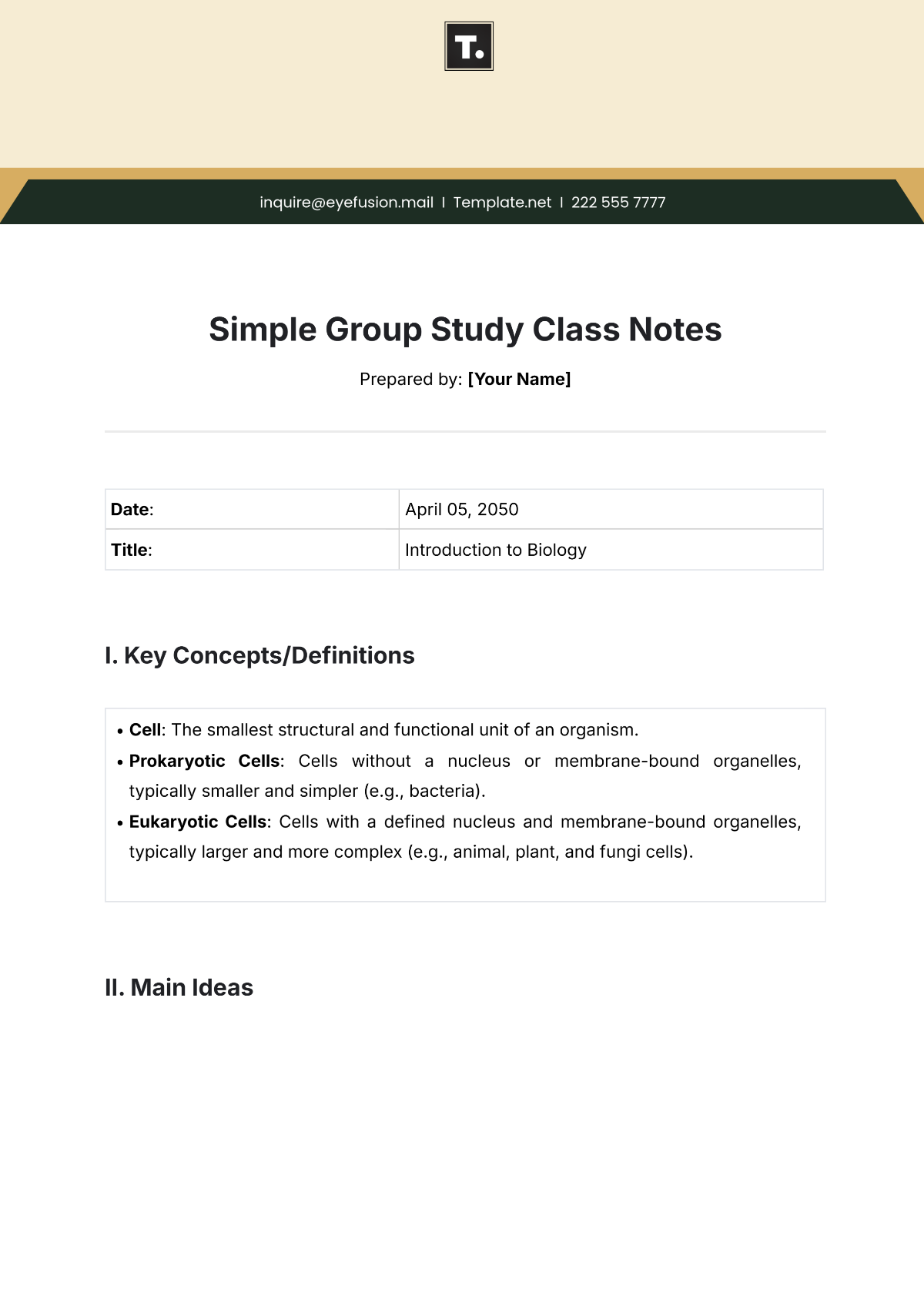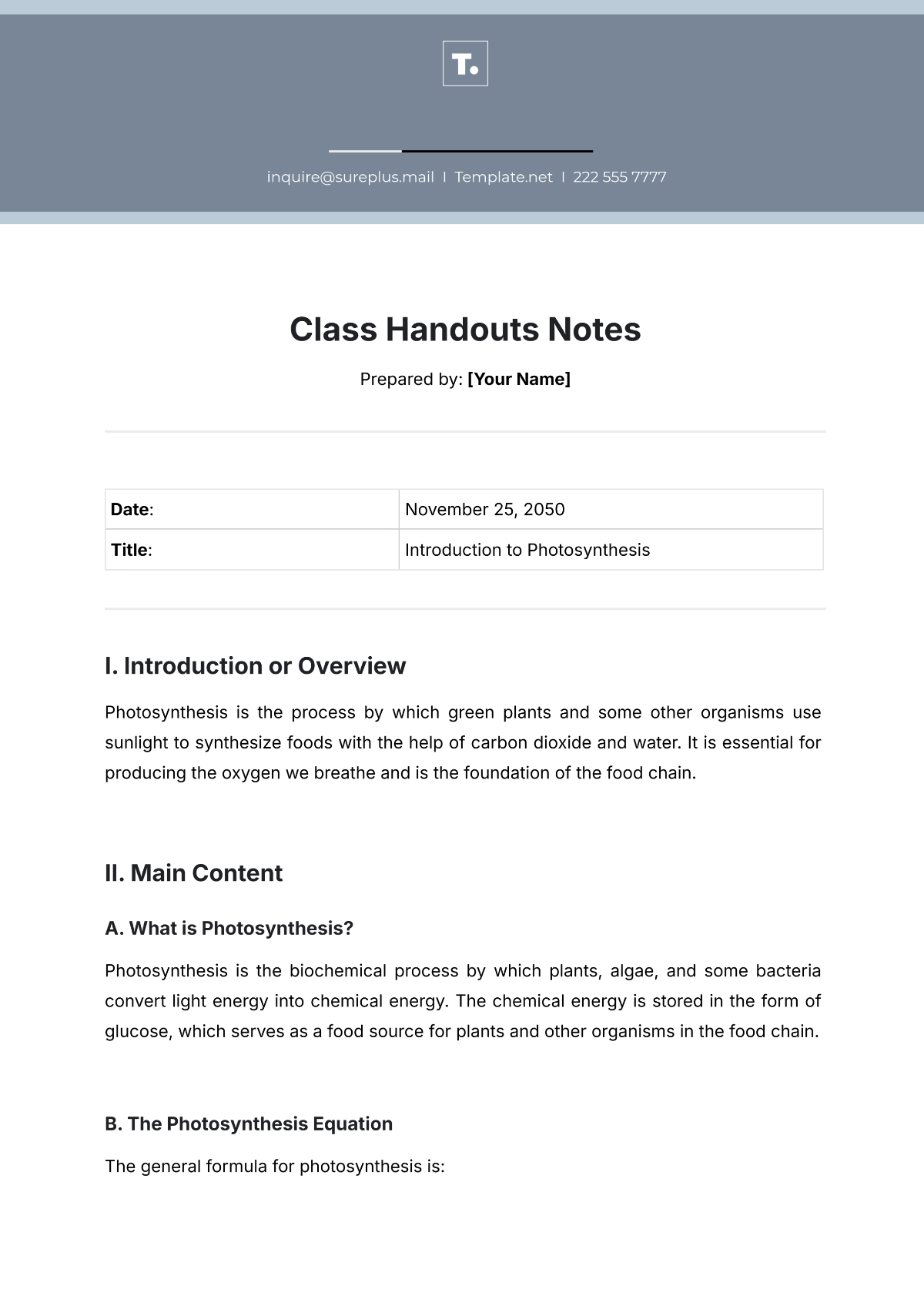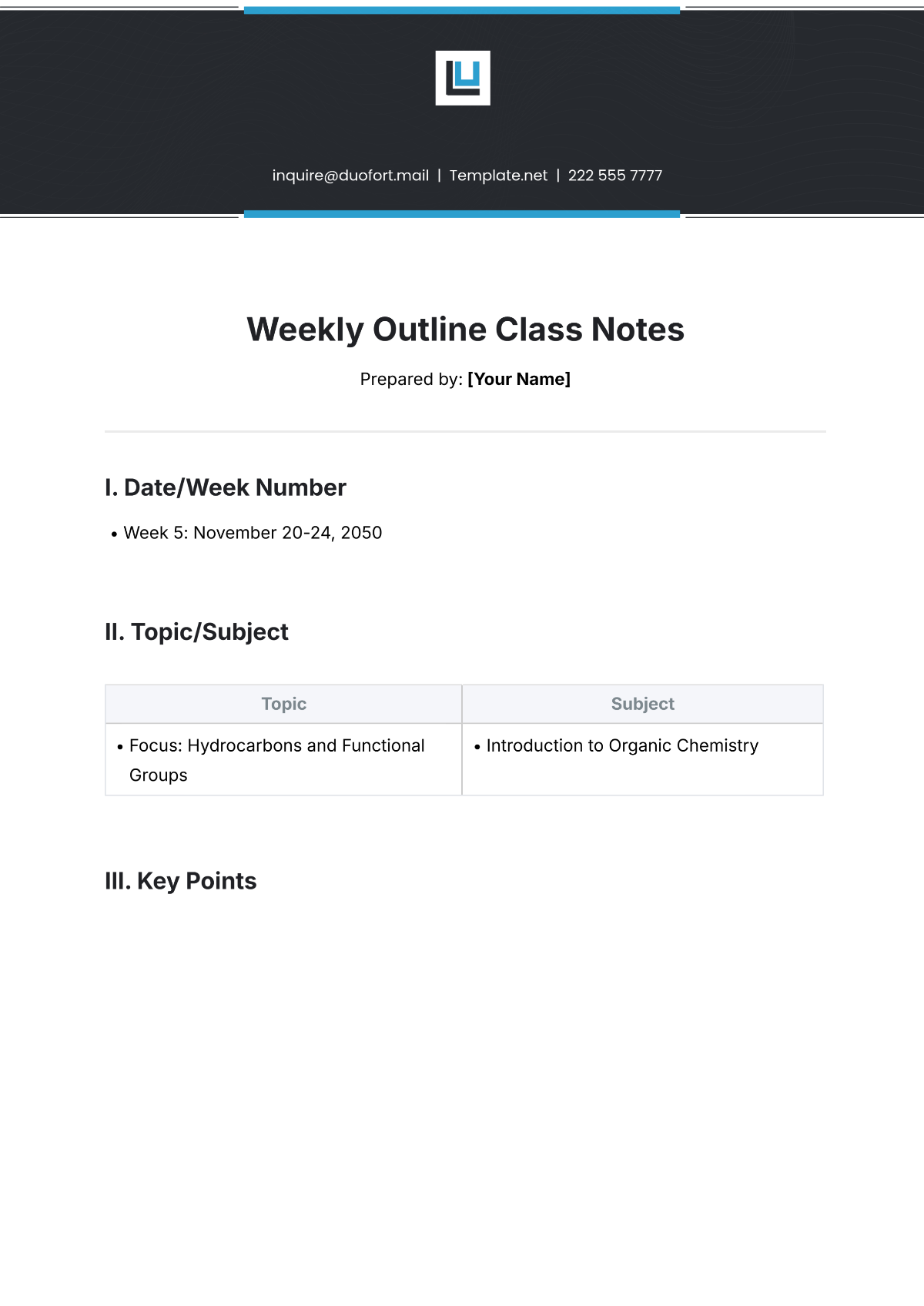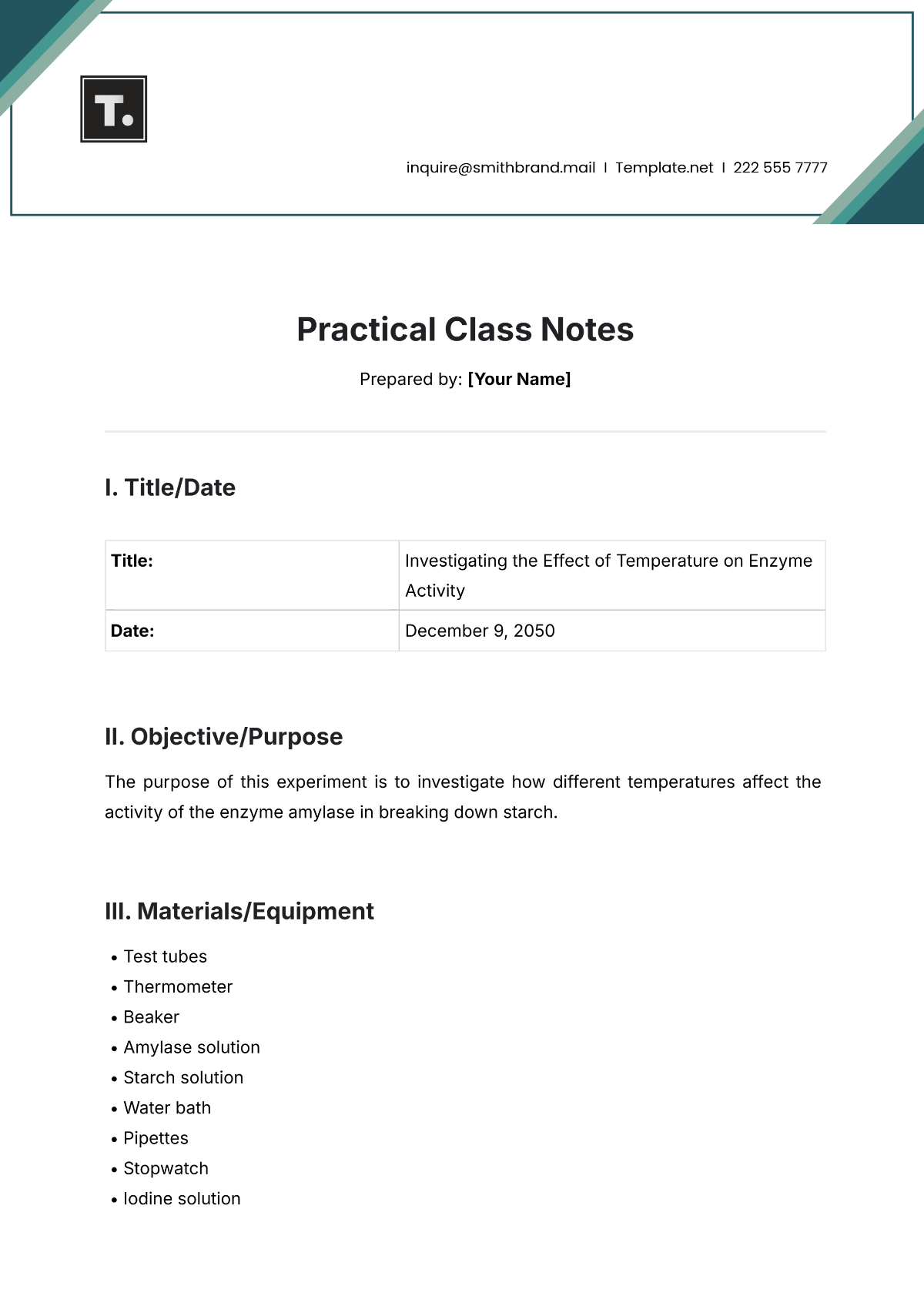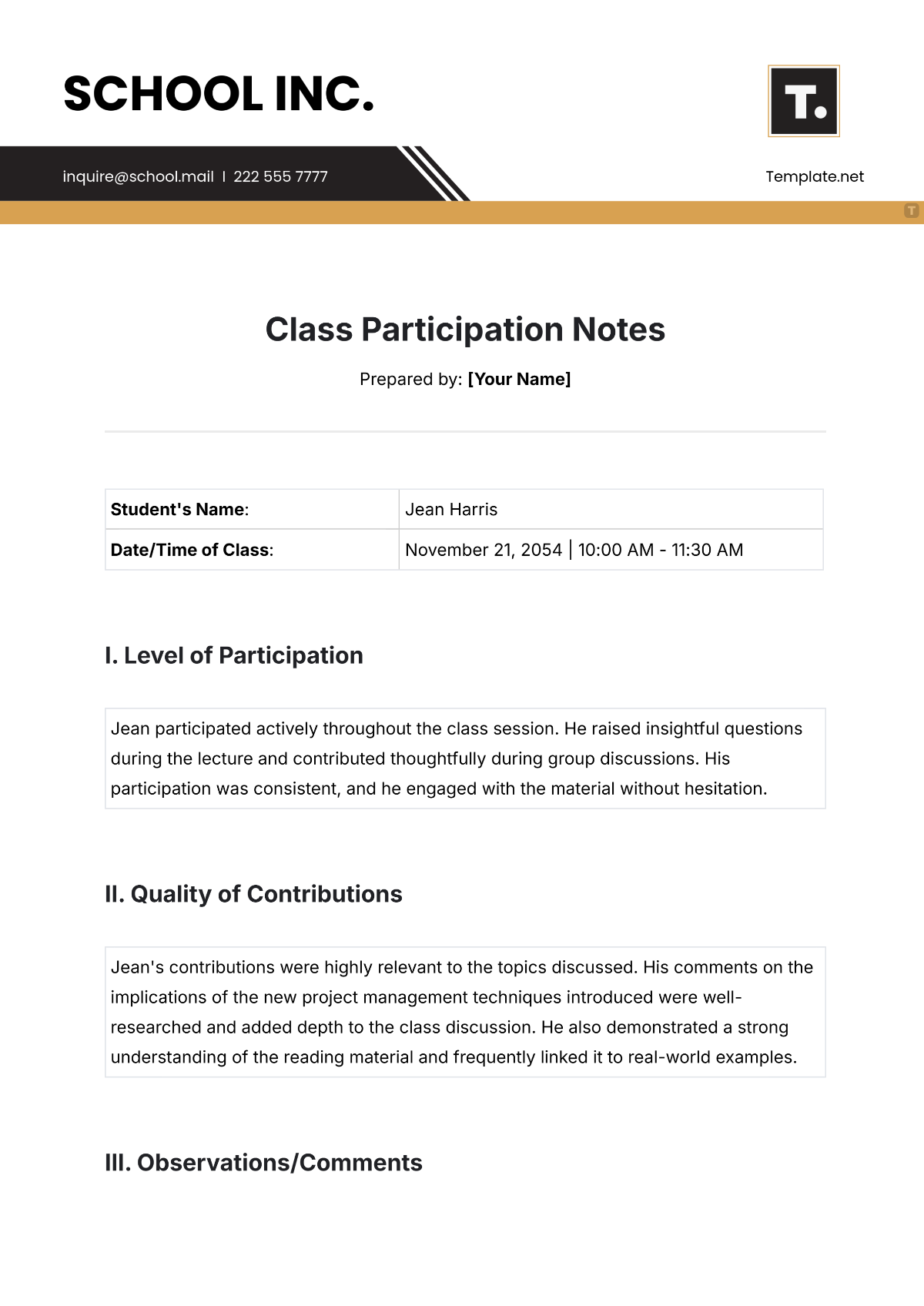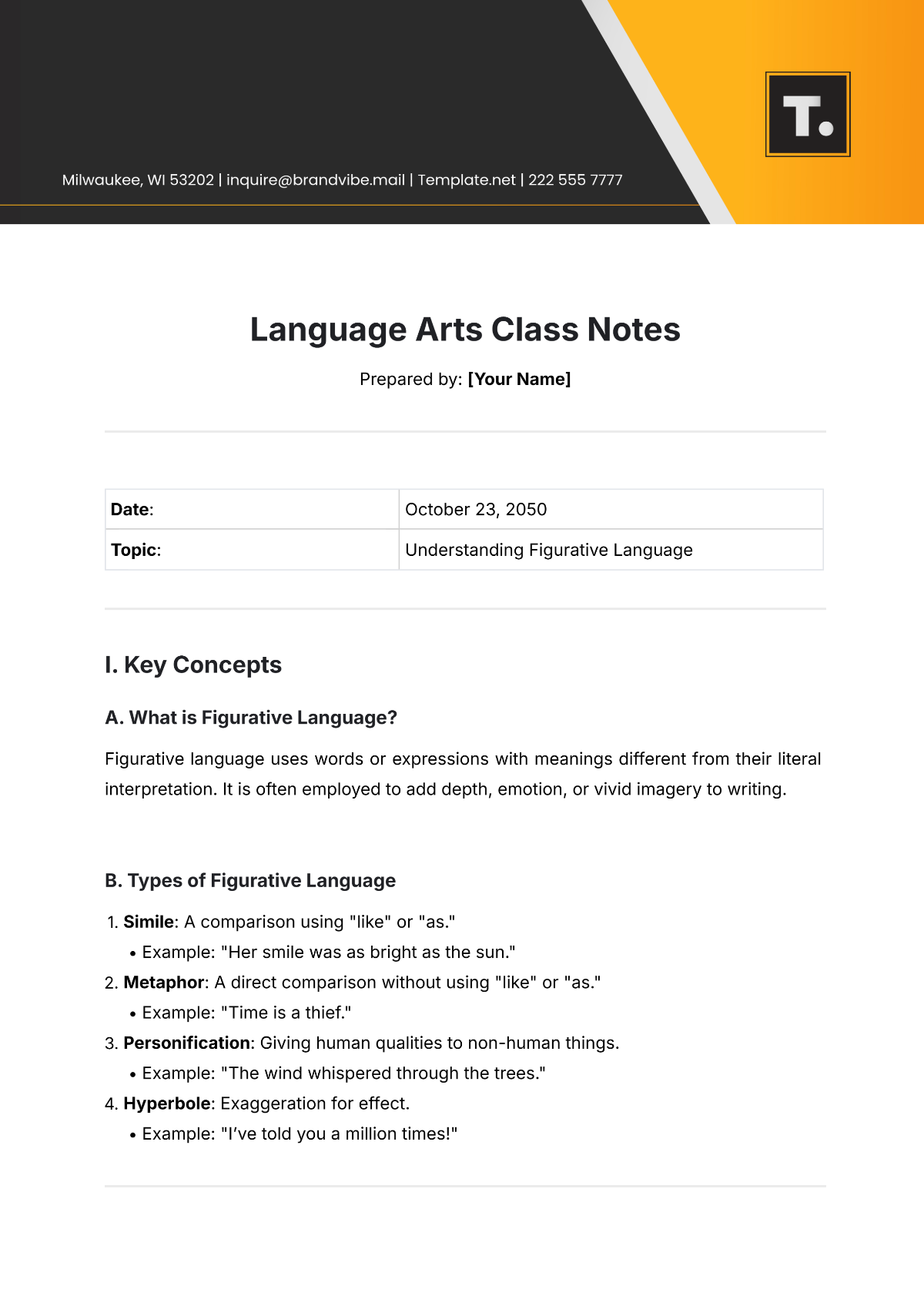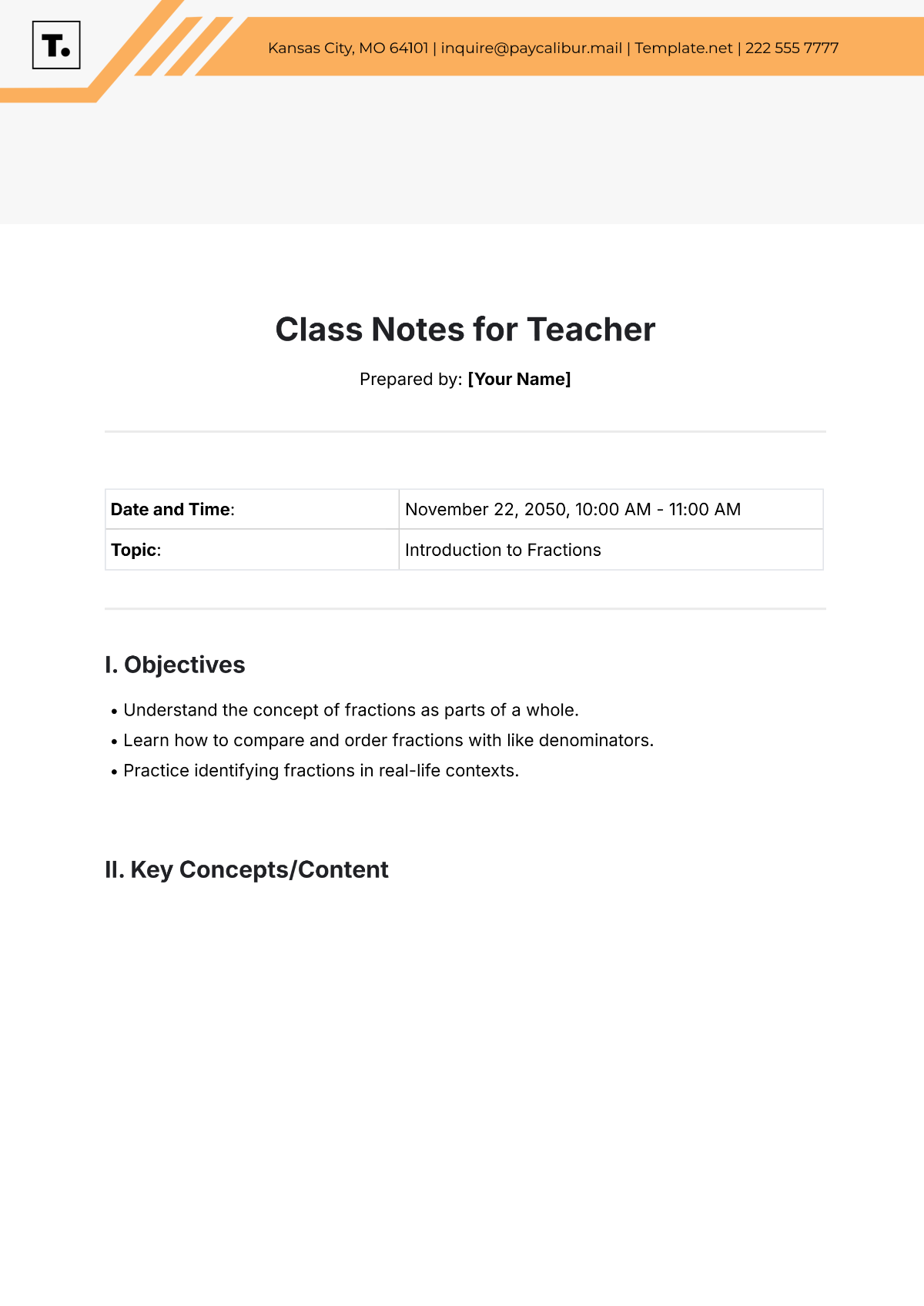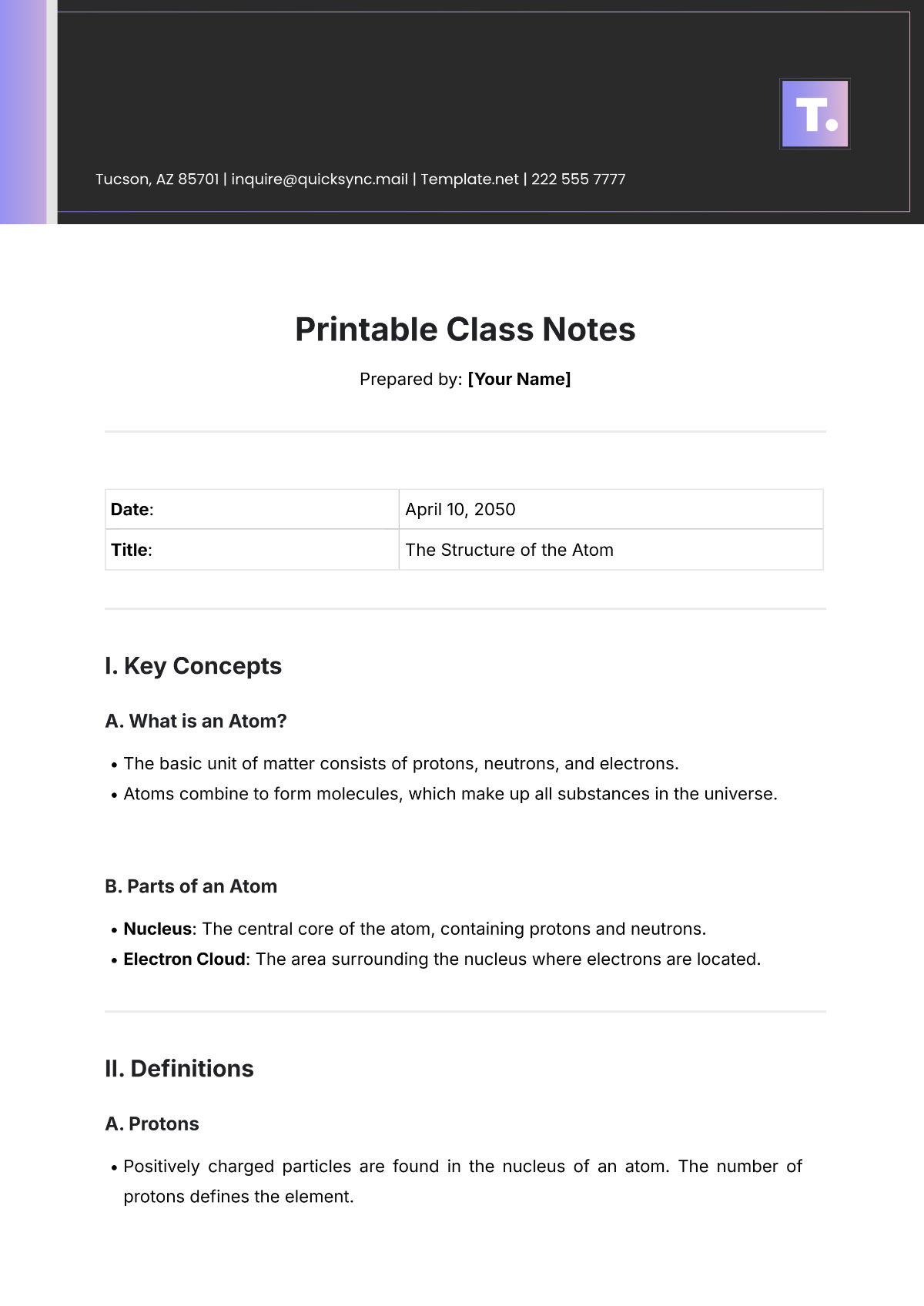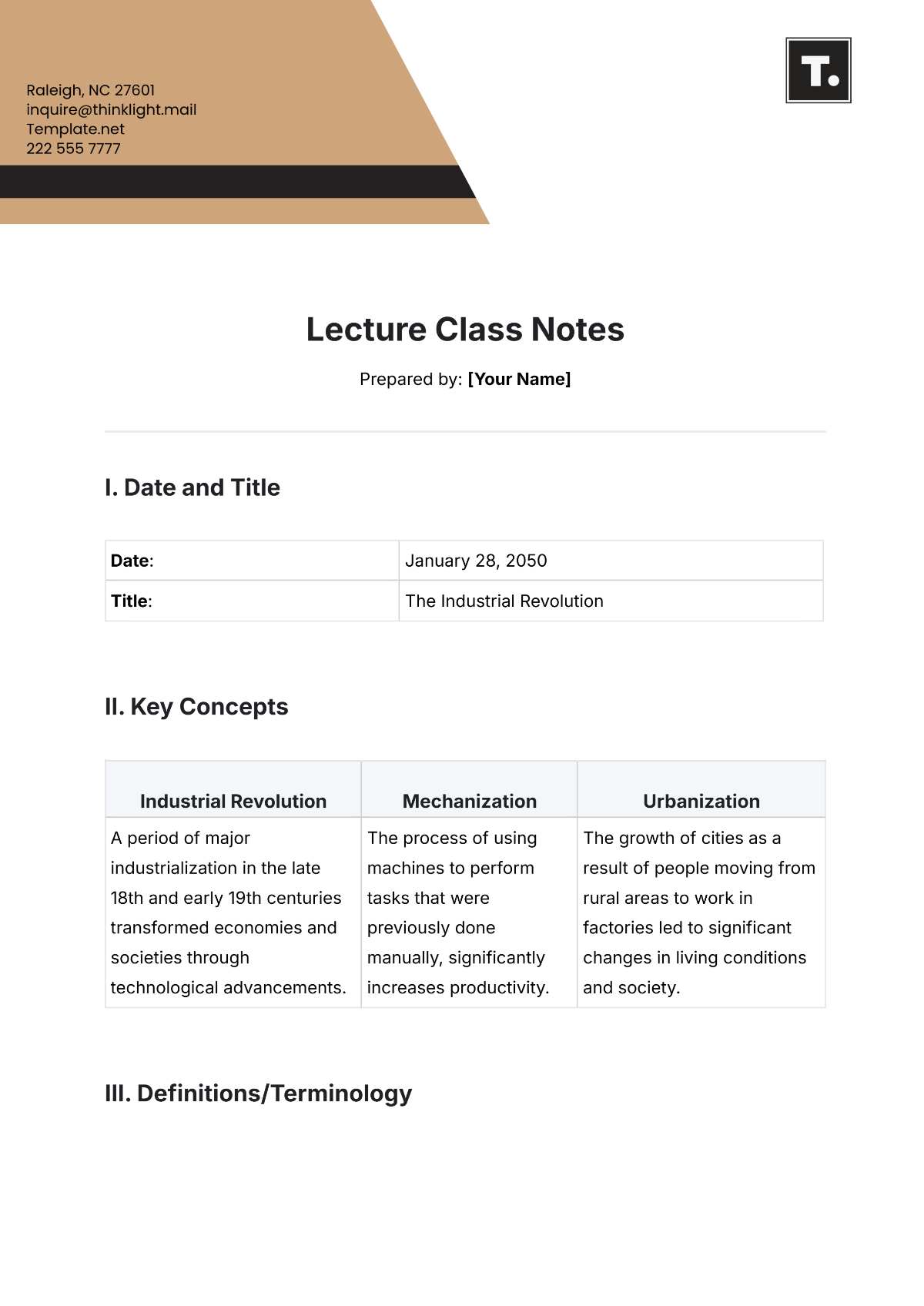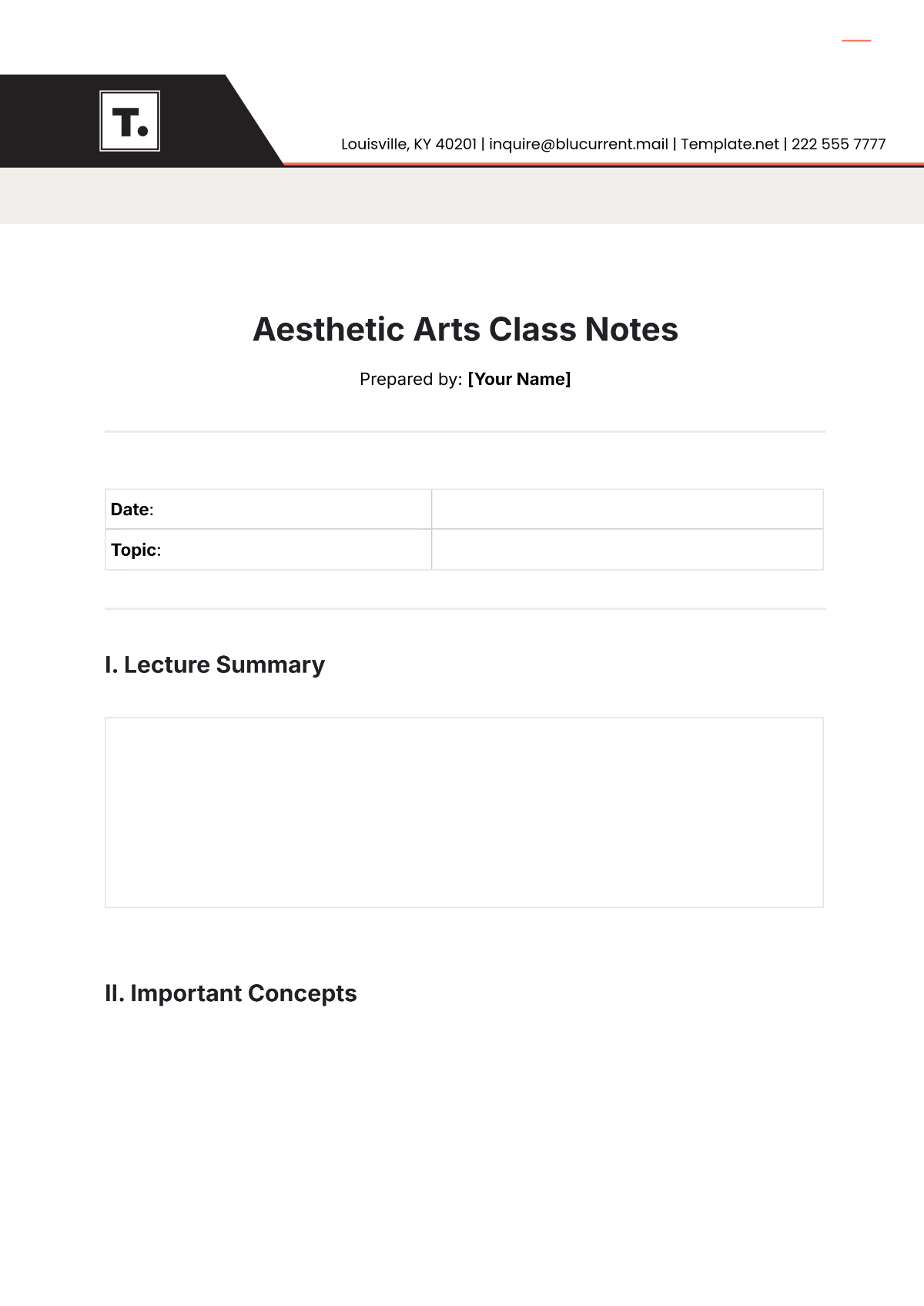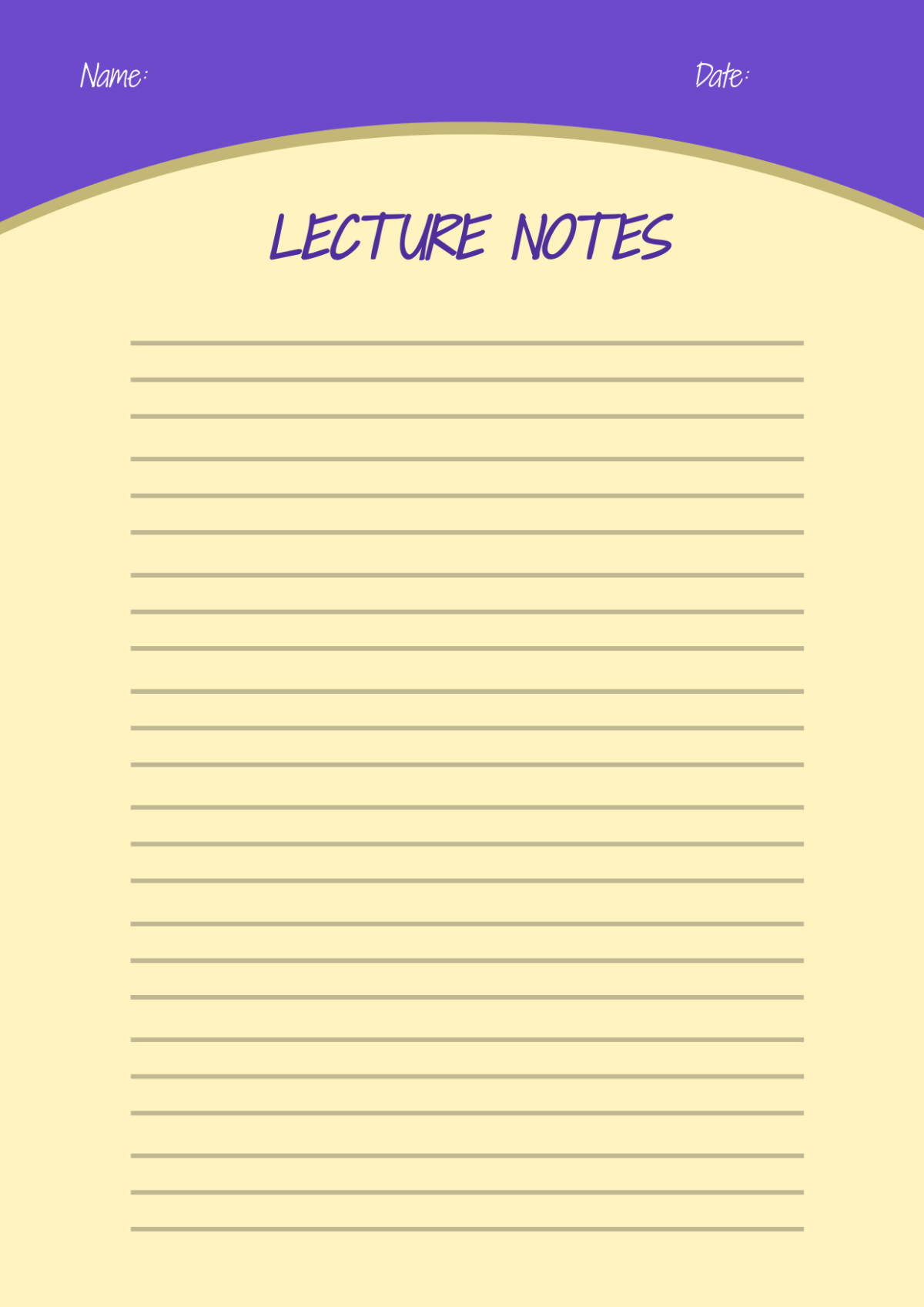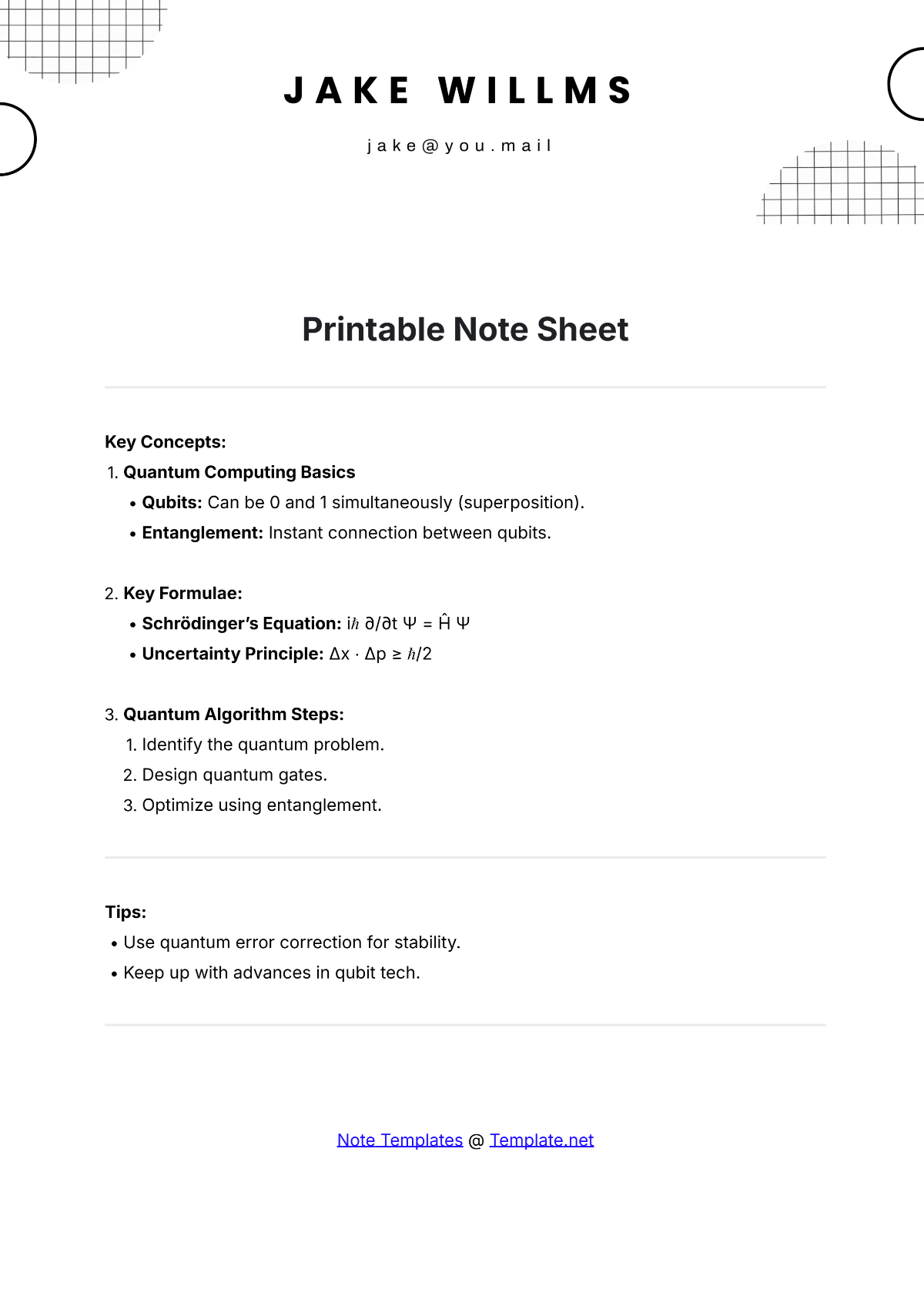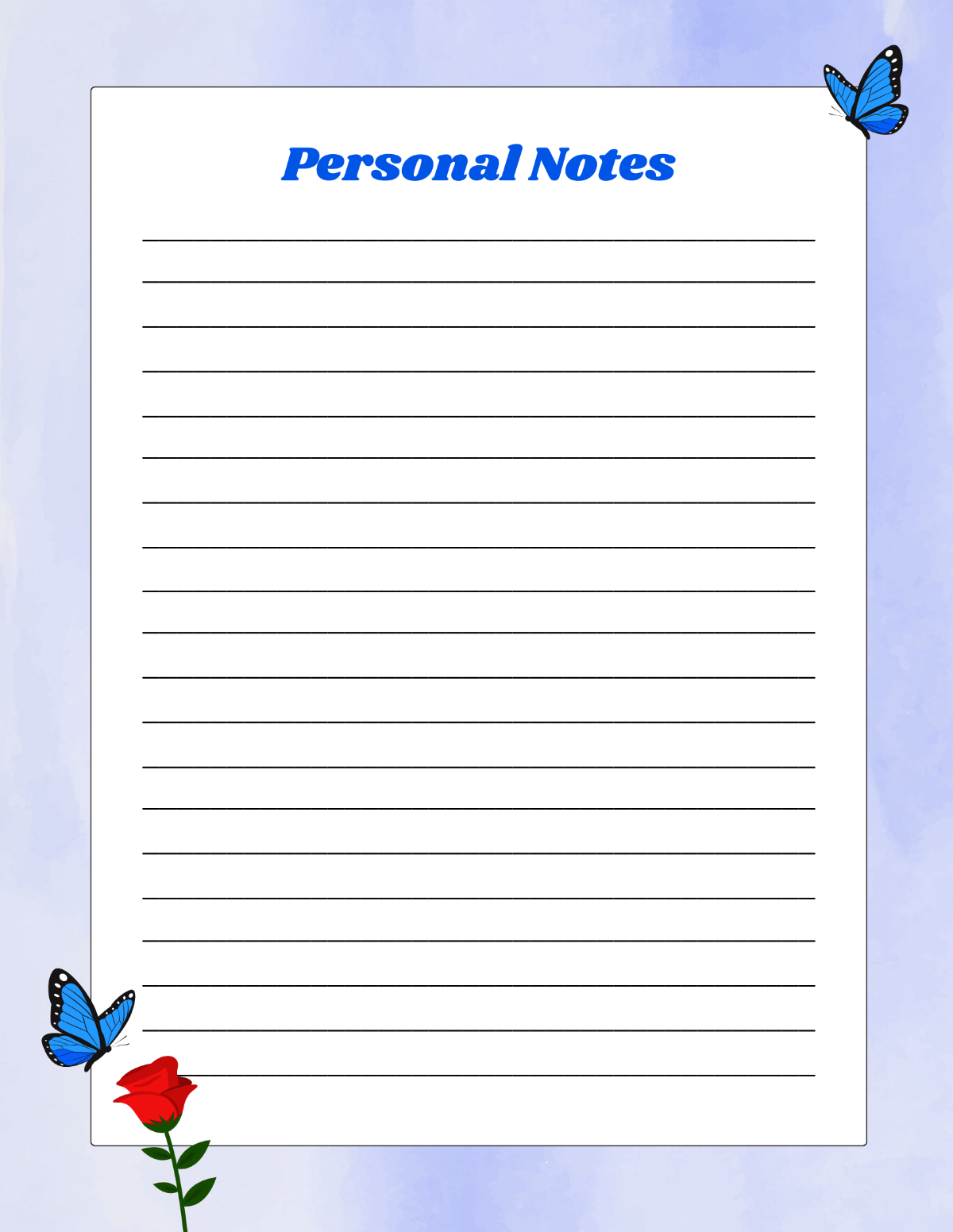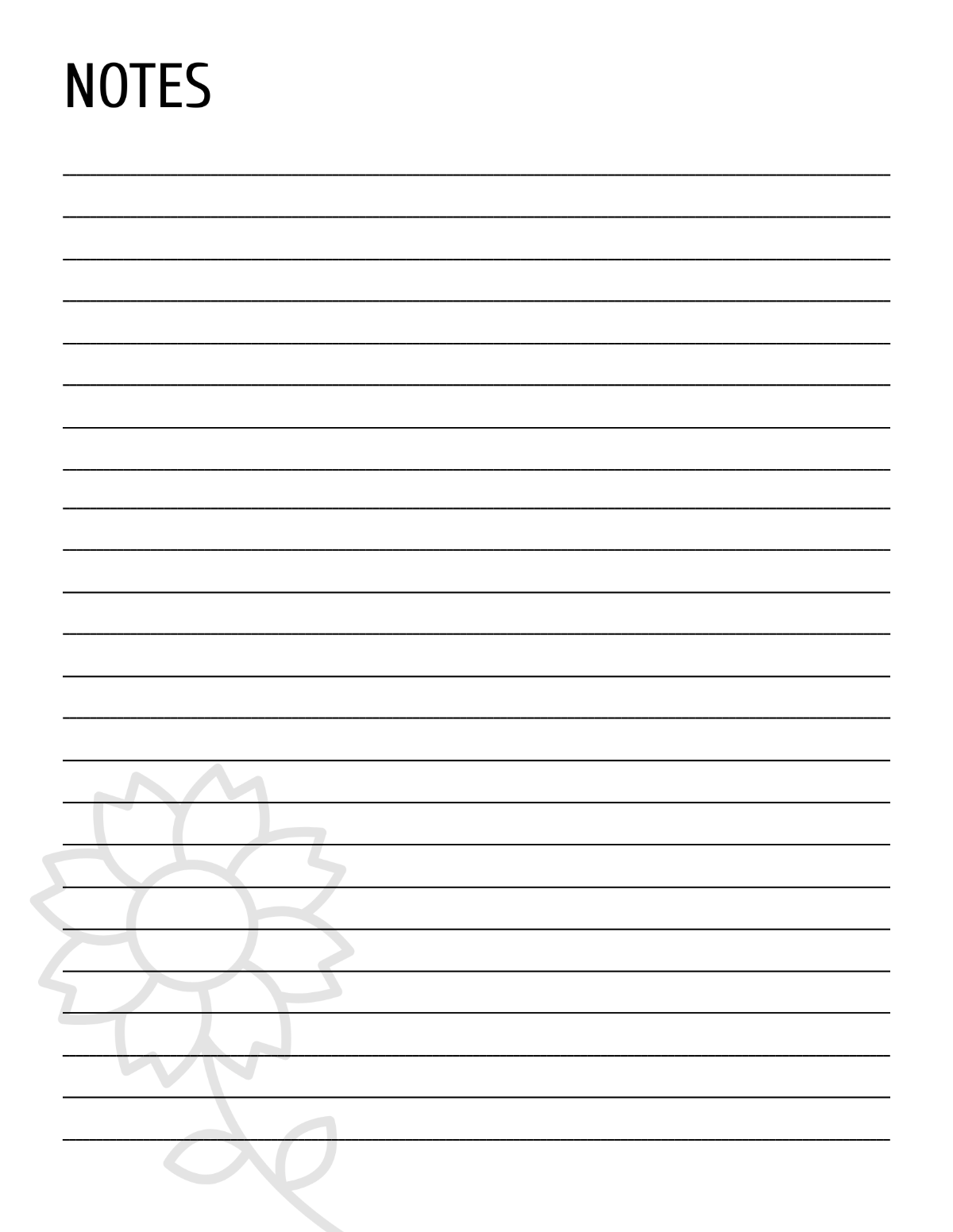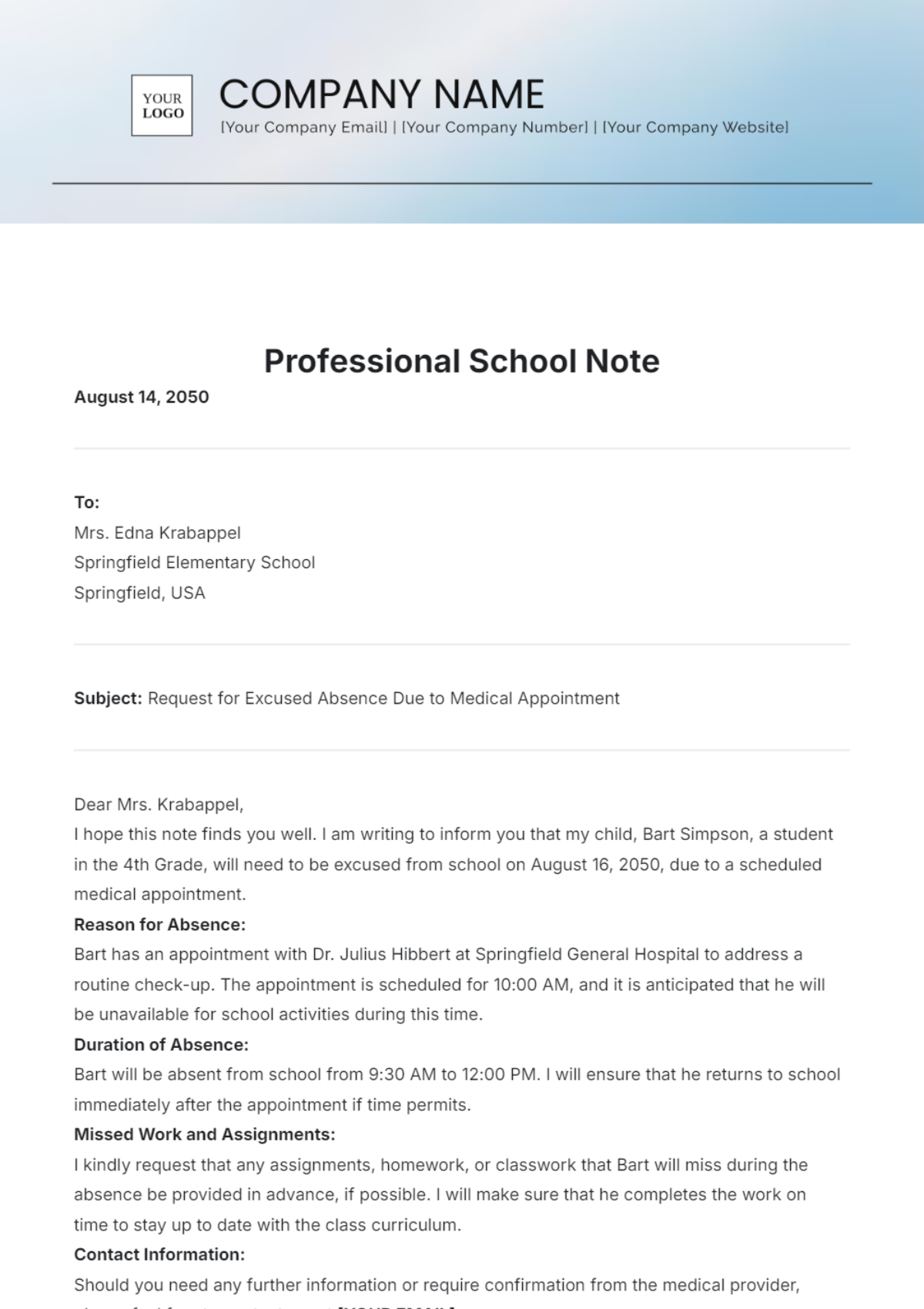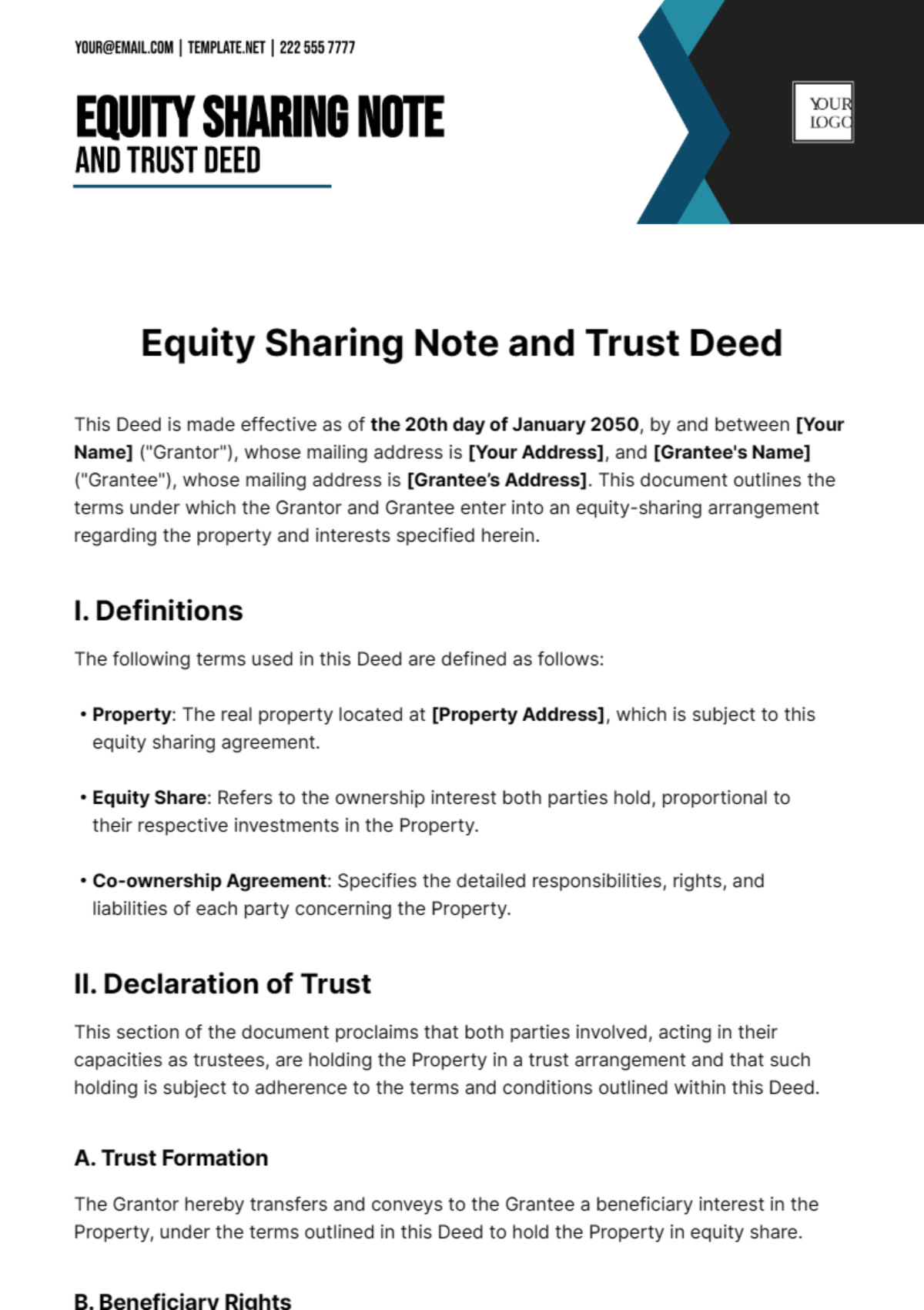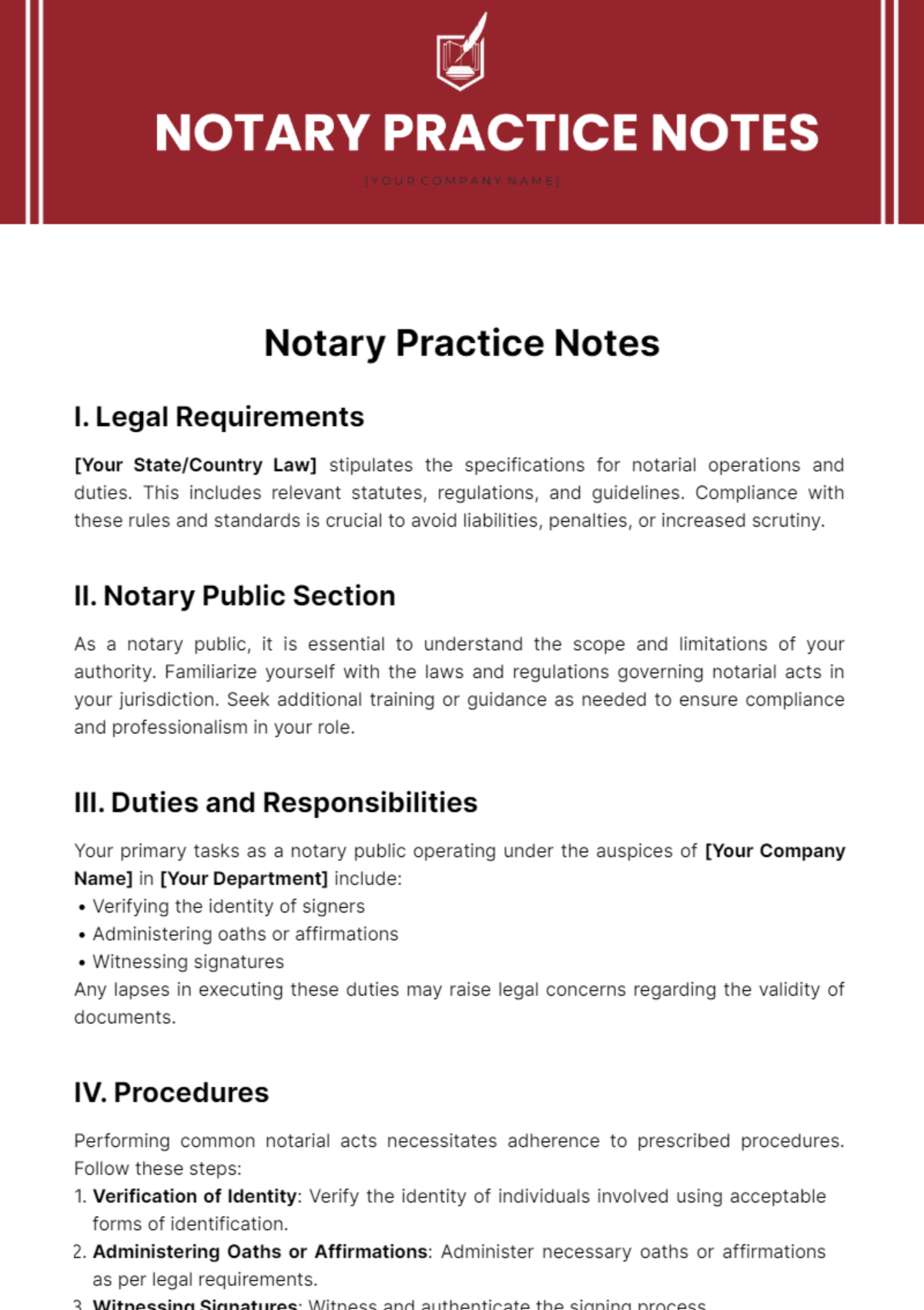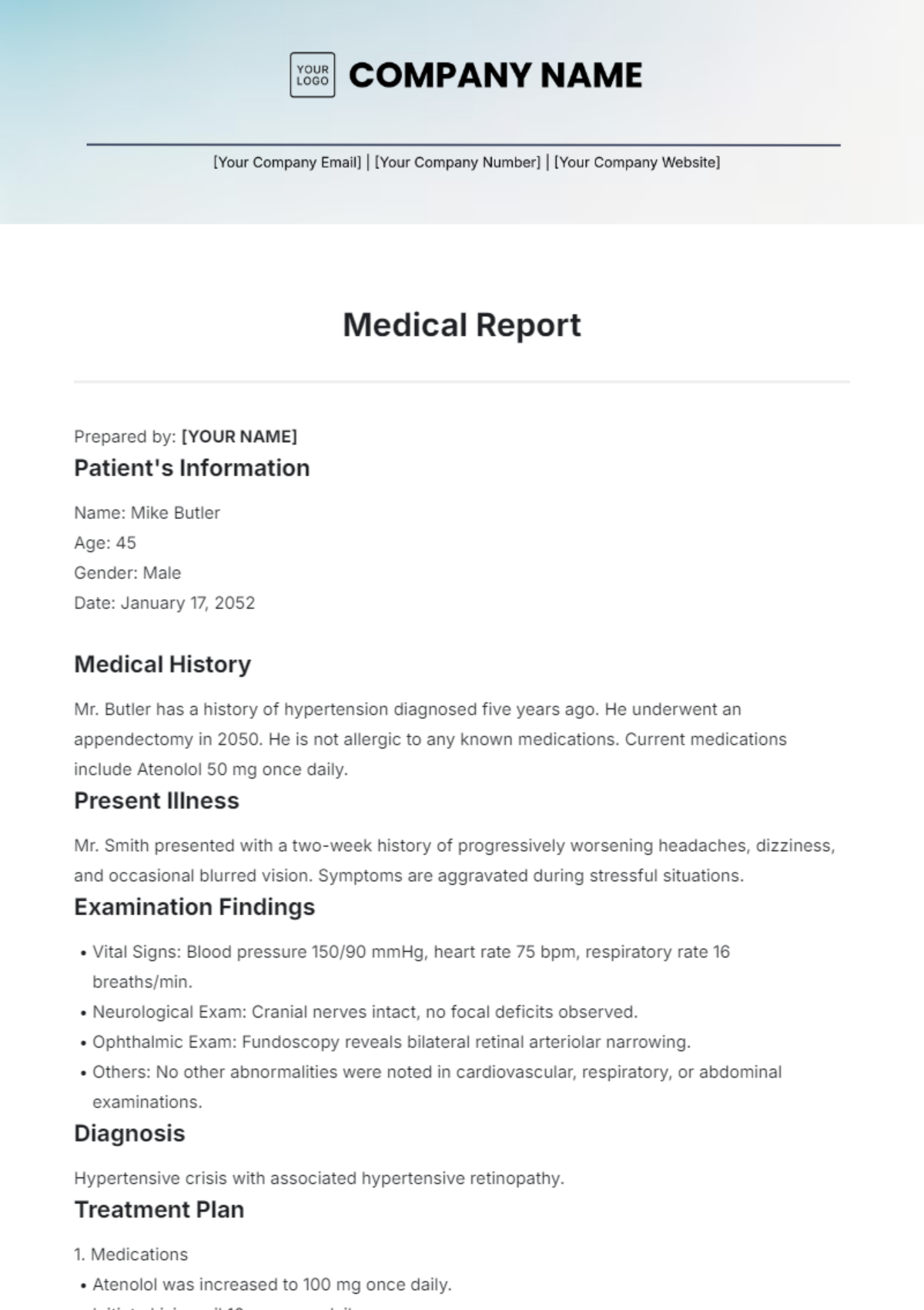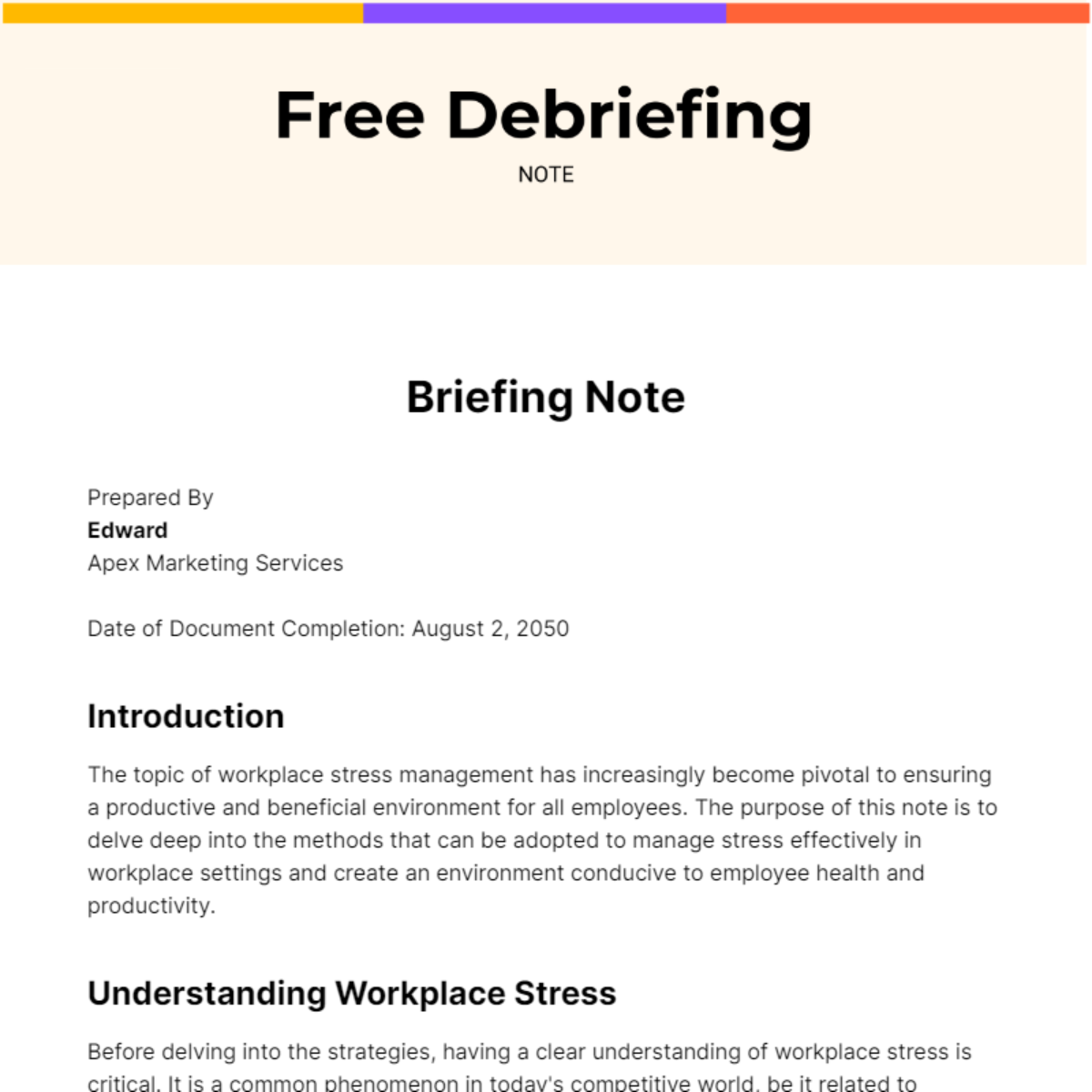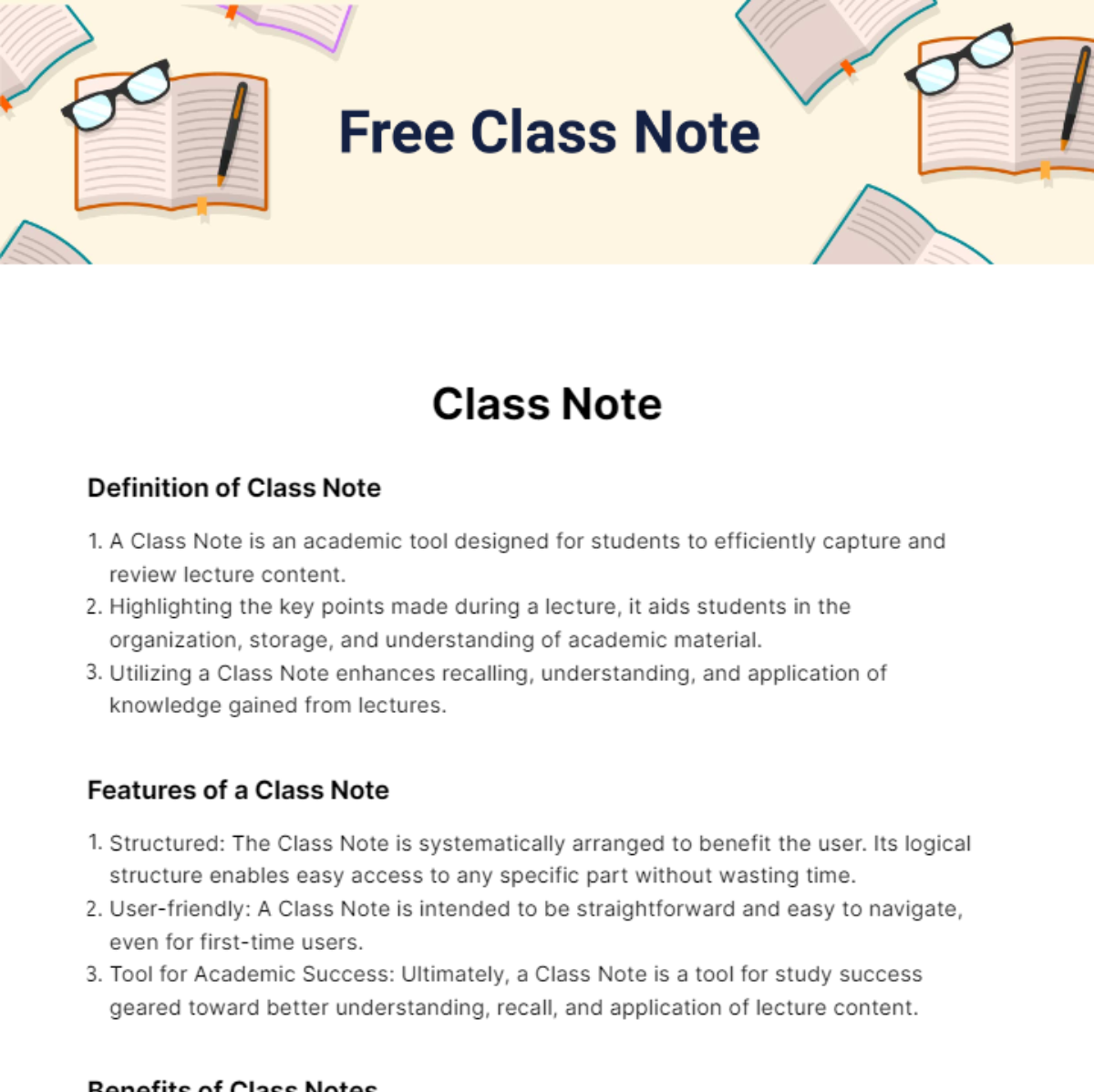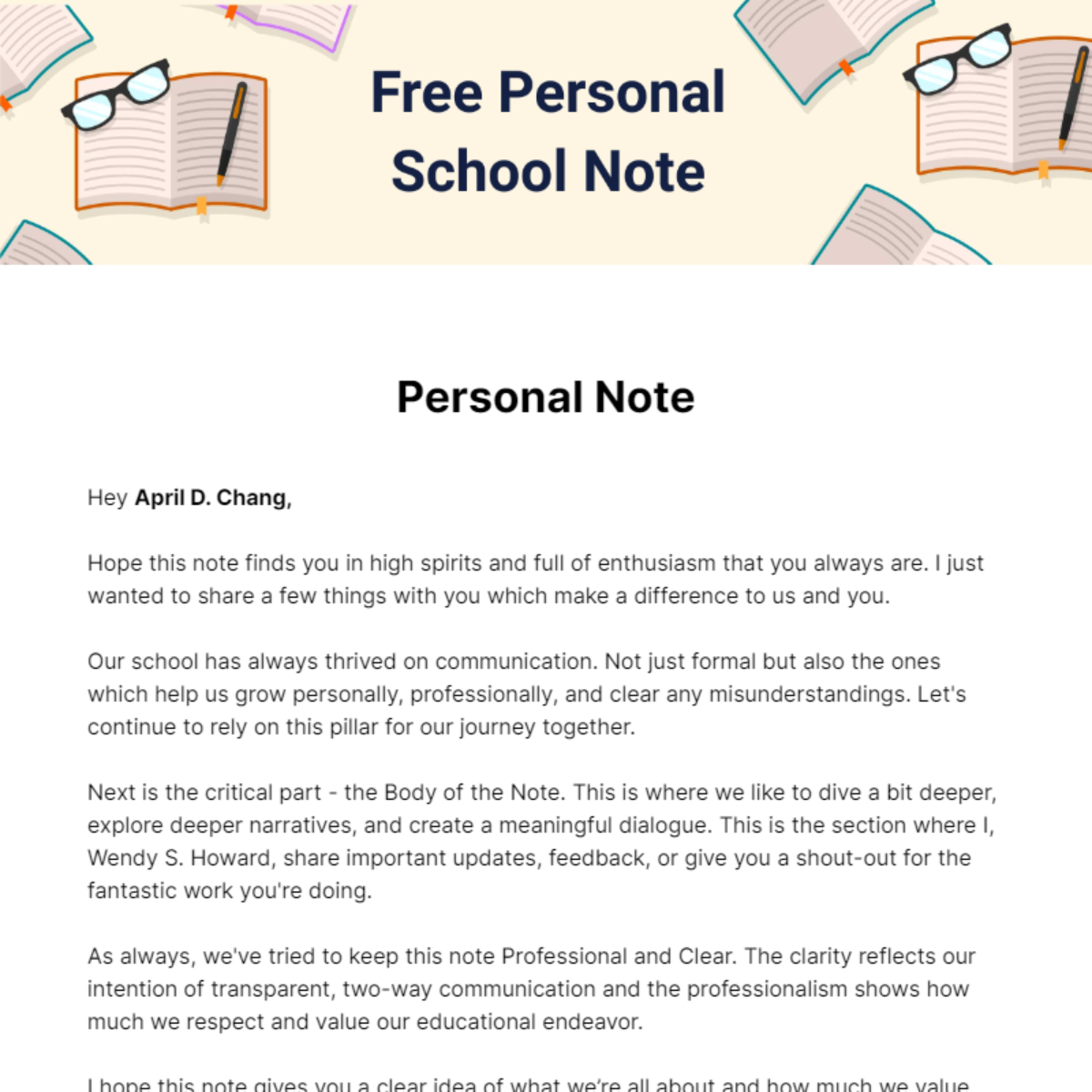A Comprehensive Guide: Class Notes for Students
Created: November 13, 2050
Introduction
Class Notes for Students are designed to be concise, organized summaries of lectures. They aid in study and deeper comprehension of various subjects.
Characteristics of Effective Class Notes
Concise: Notes should not be verbatim transcriptions of lectures but rather a brief summary of key points.
Organized: Information should be structured and categorized for easy reference and study.
Comprehensive: Notes should cover all important aspects of a lecture and should serve as a stand-alone study tool.
Readable: Legible handwriting or clear digital text is crucial for review purposes.
Types of Class Notes
Outlining: Notes are organized into main ideas, subtopics, and supporting details.
Mind Mapping: Notes are structured visually with lines connecting related topics.
Cornell System: Notes are divided into two columns with main ideas on the left and details on the right.
Matrix Notes: Information is arranged in a grid for easy comparison of different ideas.
How to Improve Note-Taking
Active Listening: Pay complete attention to the lecture and take notes on key points.
Review: Regularly review your notes to reinforce comprehension.
Summarize: Write summaries at the end of each section to consolidate understanding.
Ask Questions: Jot down any questions arising for further discussion or research.
Benefits of Effective Class Notes
Better Understanding: Notes help decipher complex topics and enhance comprehension.
Improved Memory: The process of note-taking reinforces memory and aids recall.
Study Tool: Effective notes serve as a valuable study and revision tool.
Reference Material: Notes from lectures can be saved for future reference or review.
Summary
Class Notes for Students are concise, organized, and comprehensive summaries of lectures. Effective note-taking involves active listening, reviewing, summarizing, and asking questions. There are various note-taking techniques such as outlining, mind mapping, the Cornell system, and matrix notes. Effective class notes enhance comprehension, improve memory, and serve as a great study tool.
Review Questions
1. How does note-taking affect comprehension and recall?
2. Describe four types of note-taking techniques.
3. Explain the characteristics of effective class notes
